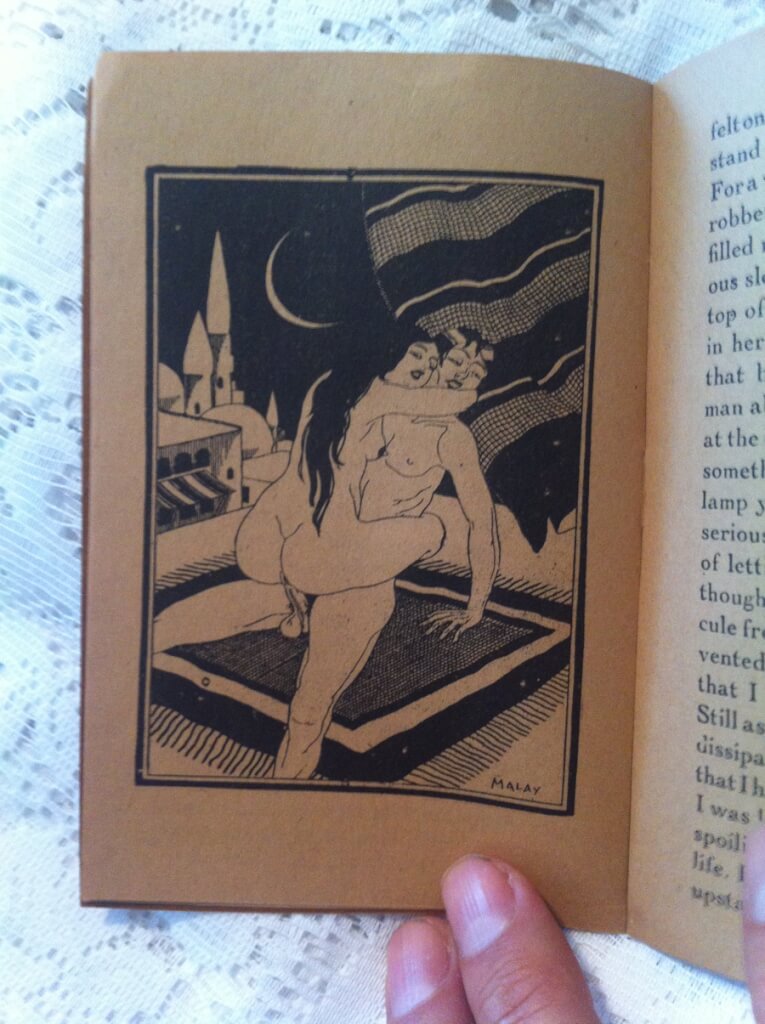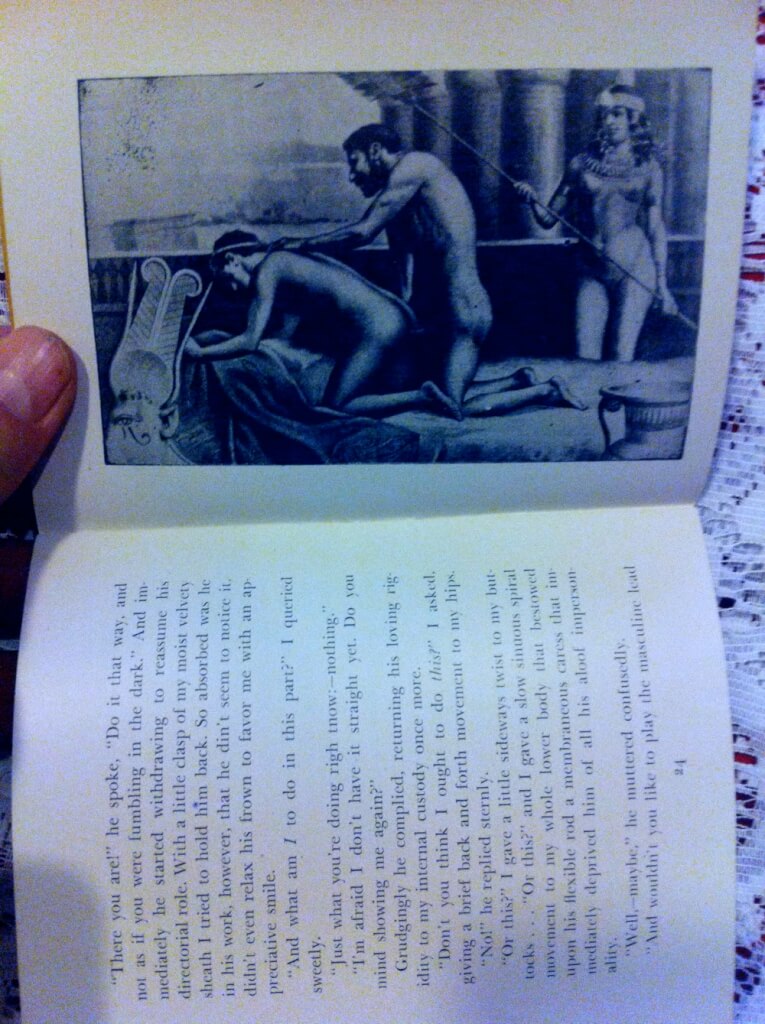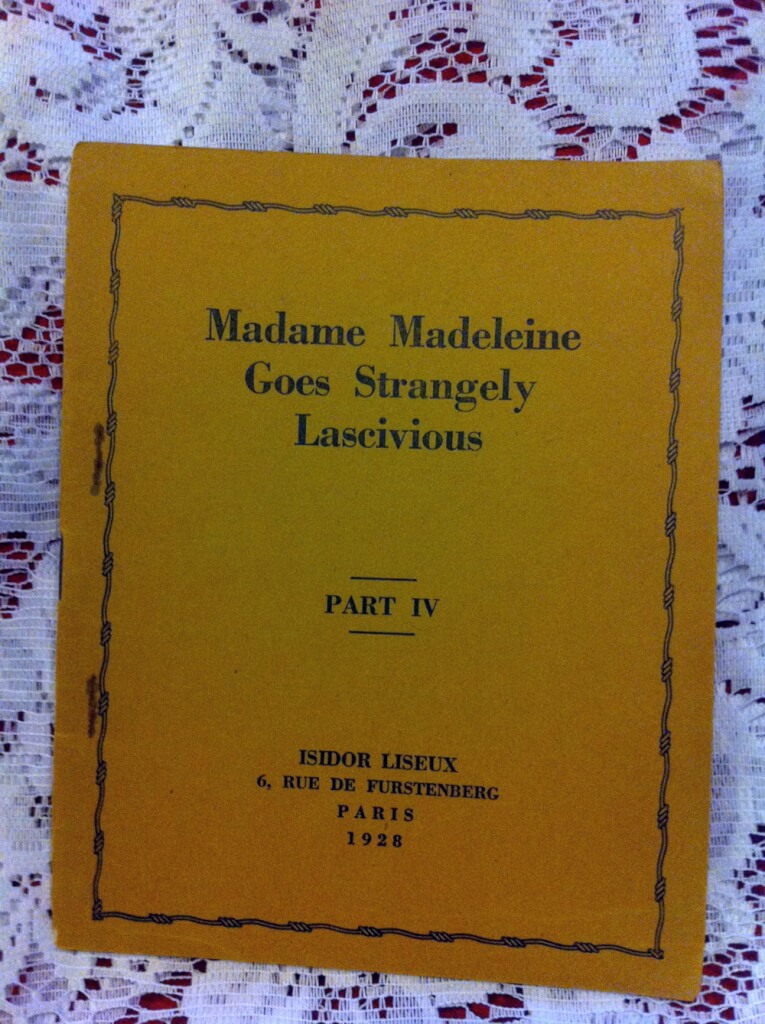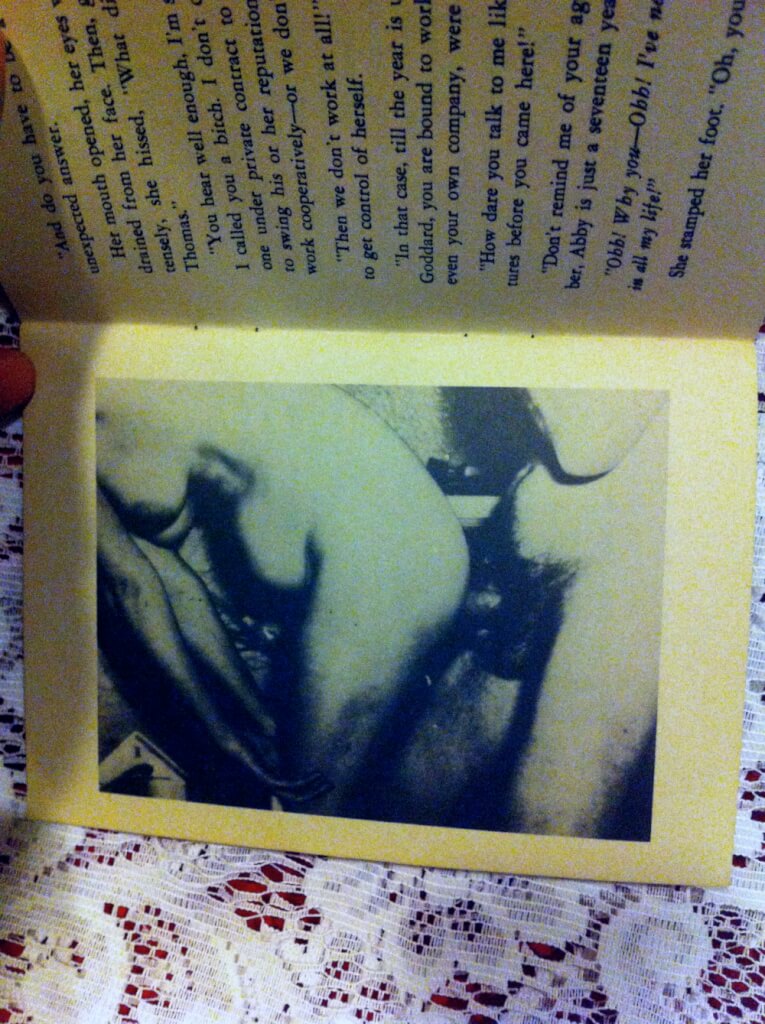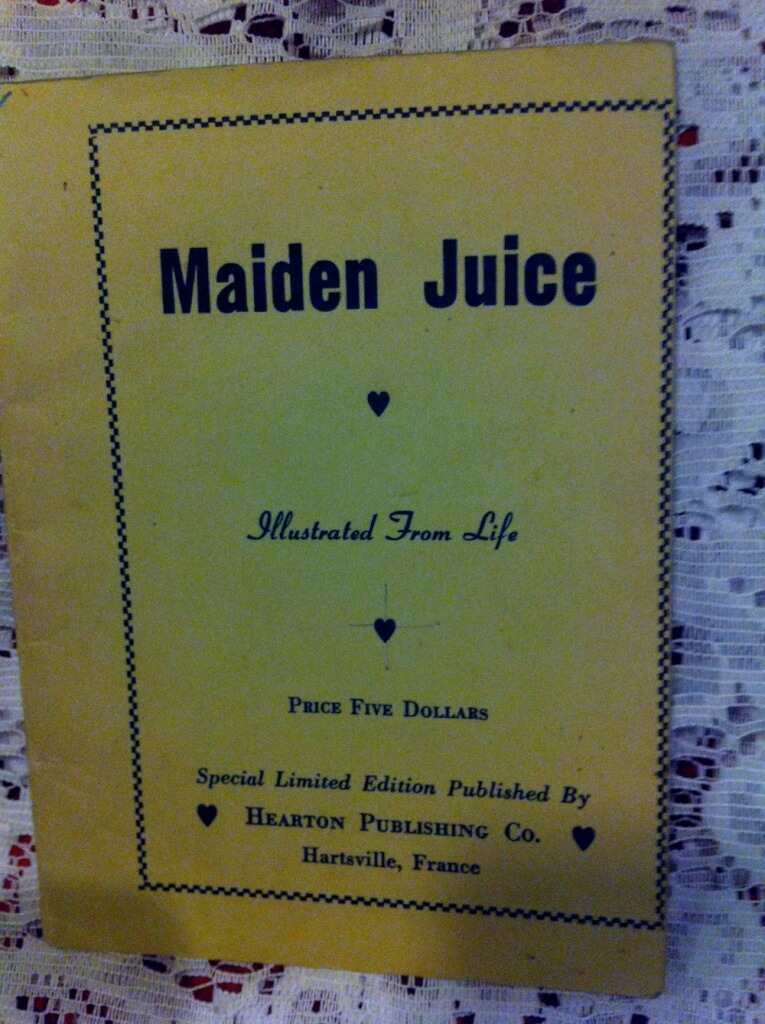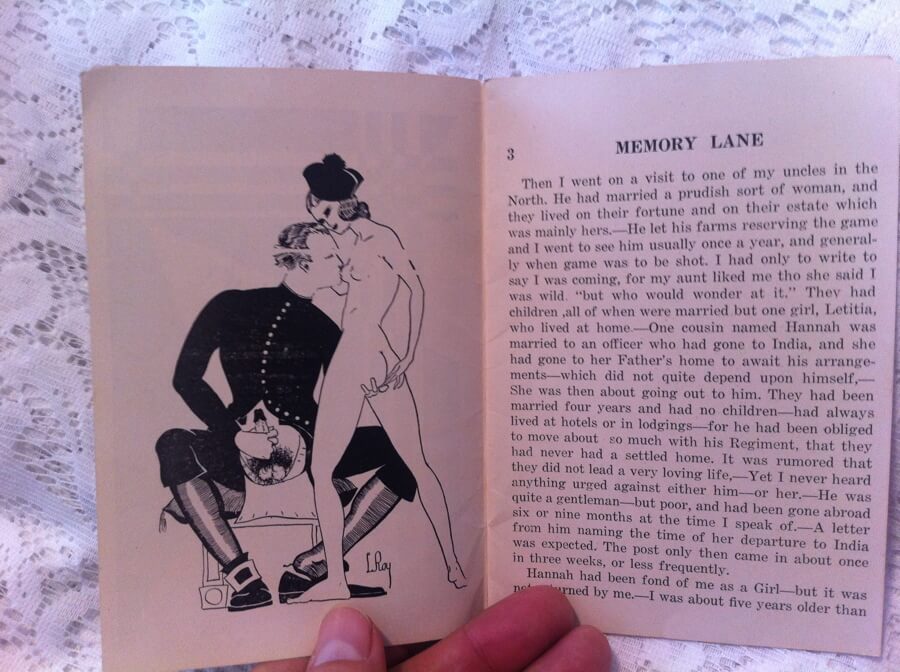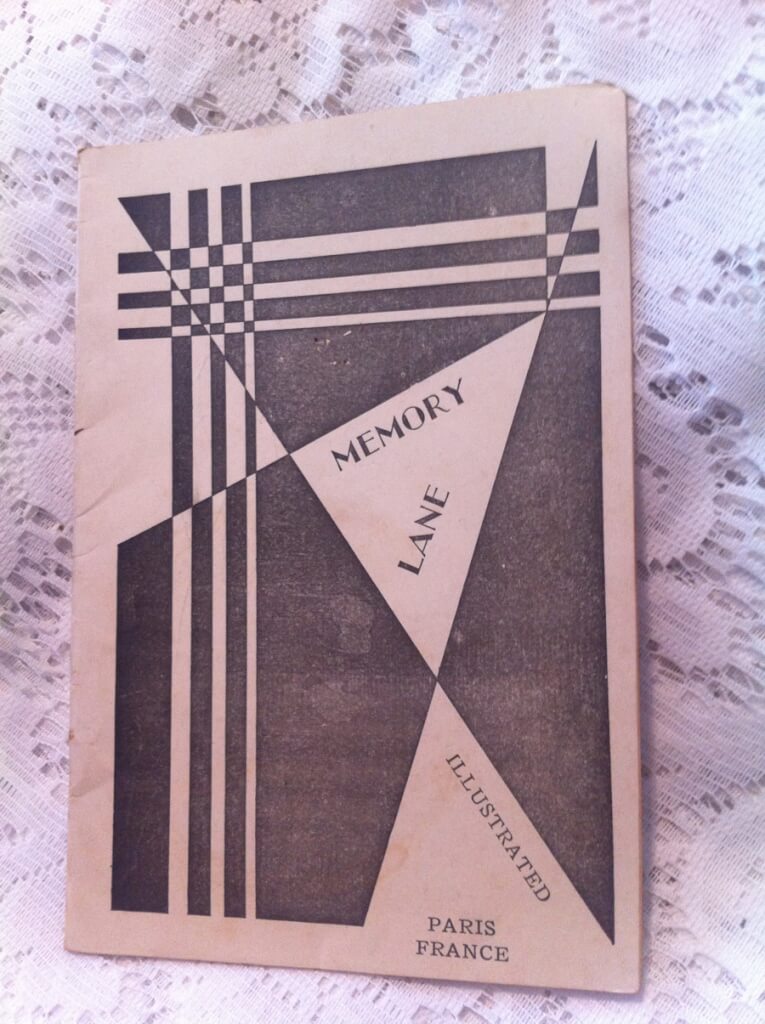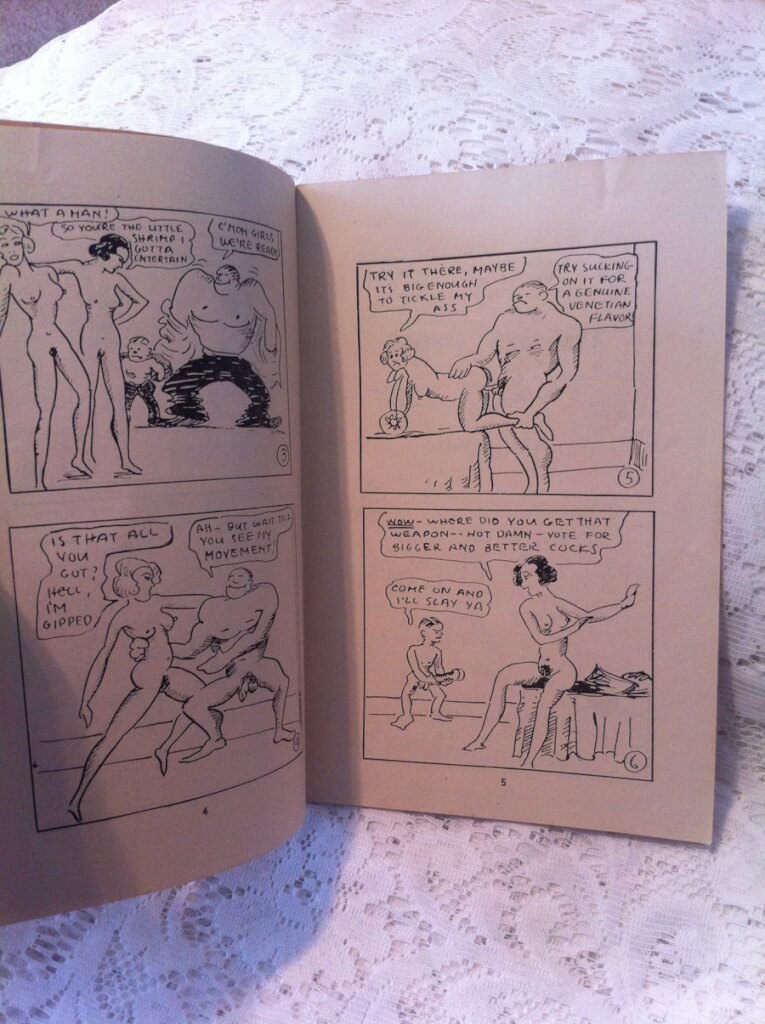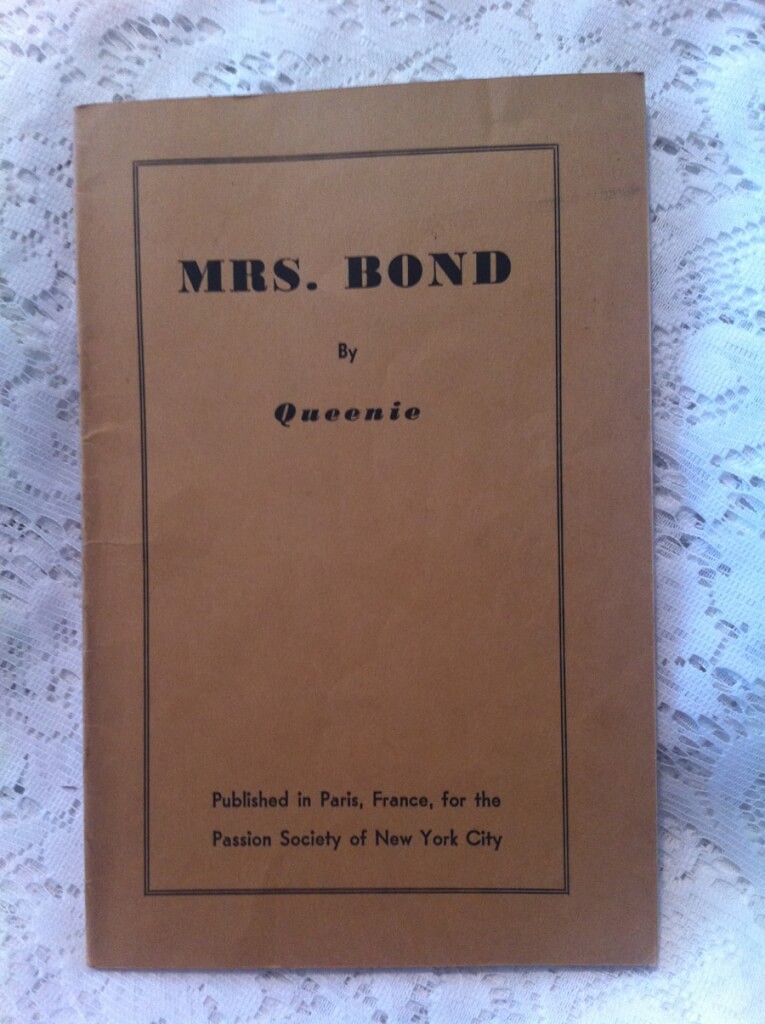-

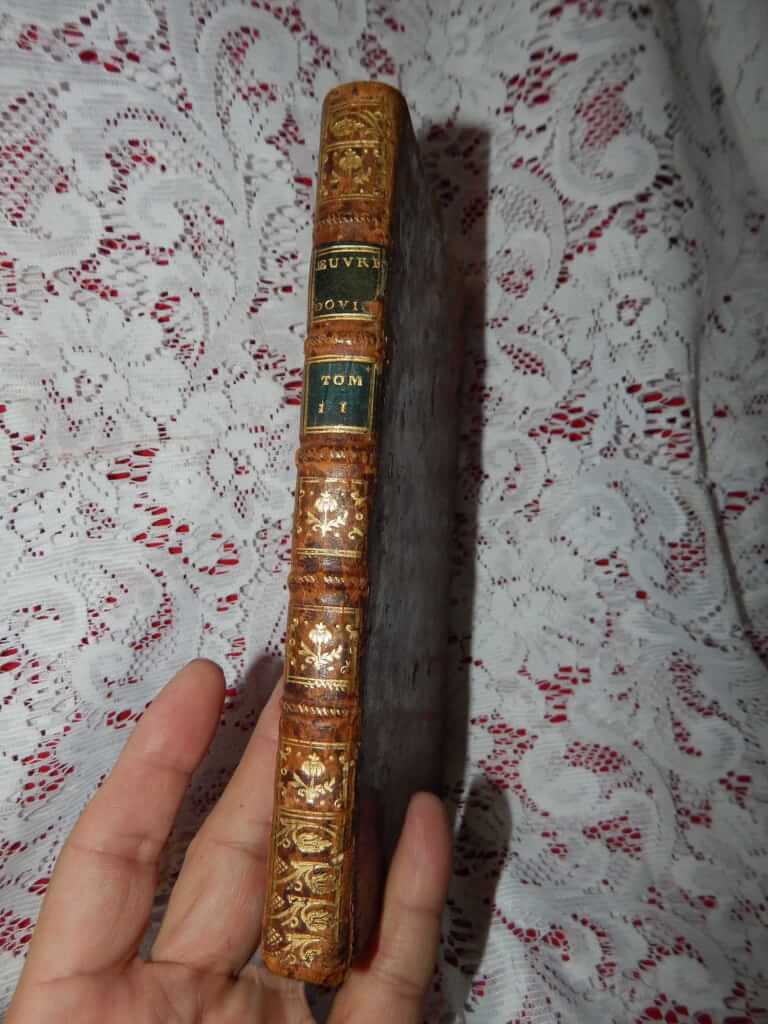 Les Œuvres Galantes et Amoureuses D'Ovide, contenant l'Art d'Aimer, le Remede d'Amour, les Épitre et les Élégies amoureuses, Nouvelle Édition (Vol 2 only of 2) (A Cythere, Aux Dépens du Loisir, 1774) 5"x8", 204pp, full calf, gilt titles and decorations to spine, 5 raised bands, marbled boards, good+ condition 2nd volume only beautifully bound, this volume contains the Art of Love, the Remedy of Love, the Letters and Elegies in Love, New Edition (Vol 2 only of 2) Publius Ovidius Naso (43 BC – AD 17/18), known as Ovid in the English-speaking world, was a Roman poet who lived during the reign of Augustus. He was a contemporary of the older Virgil and Horace, with whom he is often ranked as one of the three canonical poets of Latin literature. The Imperial scholar Quintilian considered him the last of the Latin love elegists. He enjoyed enormous popularity, but, in one of the mysteries of literary history, was sent by Augustus into exile in a remote province on the Black Sea, where he remained until his death. Ovid himself attributes his exile to carmen et error, "a poem and a mistake", but his discretion in discussing the causes has resulted in much speculation among scholars. The first major Roman poet to begin his career during the reign of Augustus, Ovid is today best known for the Metamorphoses, a 15-book continuous mythological narrative written in the meter of epic, and for works in elegiac couplets such as Ars Amatoria ("The Art of Love") and Fasti. His poetry was much imitated during Late Antiquity and the Middle Ages, and greatly influenced Western art and literature. The Metamorphoses remains one of the most important sources of classical mythology.
Les Œuvres Galantes et Amoureuses D'Ovide, contenant l'Art d'Aimer, le Remede d'Amour, les Épitre et les Élégies amoureuses, Nouvelle Édition (Vol 2 only of 2) (A Cythere, Aux Dépens du Loisir, 1774) 5"x8", 204pp, full calf, gilt titles and decorations to spine, 5 raised bands, marbled boards, good+ condition 2nd volume only beautifully bound, this volume contains the Art of Love, the Remedy of Love, the Letters and Elegies in Love, New Edition (Vol 2 only of 2) Publius Ovidius Naso (43 BC – AD 17/18), known as Ovid in the English-speaking world, was a Roman poet who lived during the reign of Augustus. He was a contemporary of the older Virgil and Horace, with whom he is often ranked as one of the three canonical poets of Latin literature. The Imperial scholar Quintilian considered him the last of the Latin love elegists. He enjoyed enormous popularity, but, in one of the mysteries of literary history, was sent by Augustus into exile in a remote province on the Black Sea, where he remained until his death. Ovid himself attributes his exile to carmen et error, "a poem and a mistake", but his discretion in discussing the causes has resulted in much speculation among scholars. The first major Roman poet to begin his career during the reign of Augustus, Ovid is today best known for the Metamorphoses, a 15-book continuous mythological narrative written in the meter of epic, and for works in elegiac couplets such as Ars Amatoria ("The Art of Love") and Fasti. His poetry was much imitated during Late Antiquity and the Middle Ages, and greatly influenced Western art and literature. The Metamorphoses remains one of the most important sources of classical mythology. -
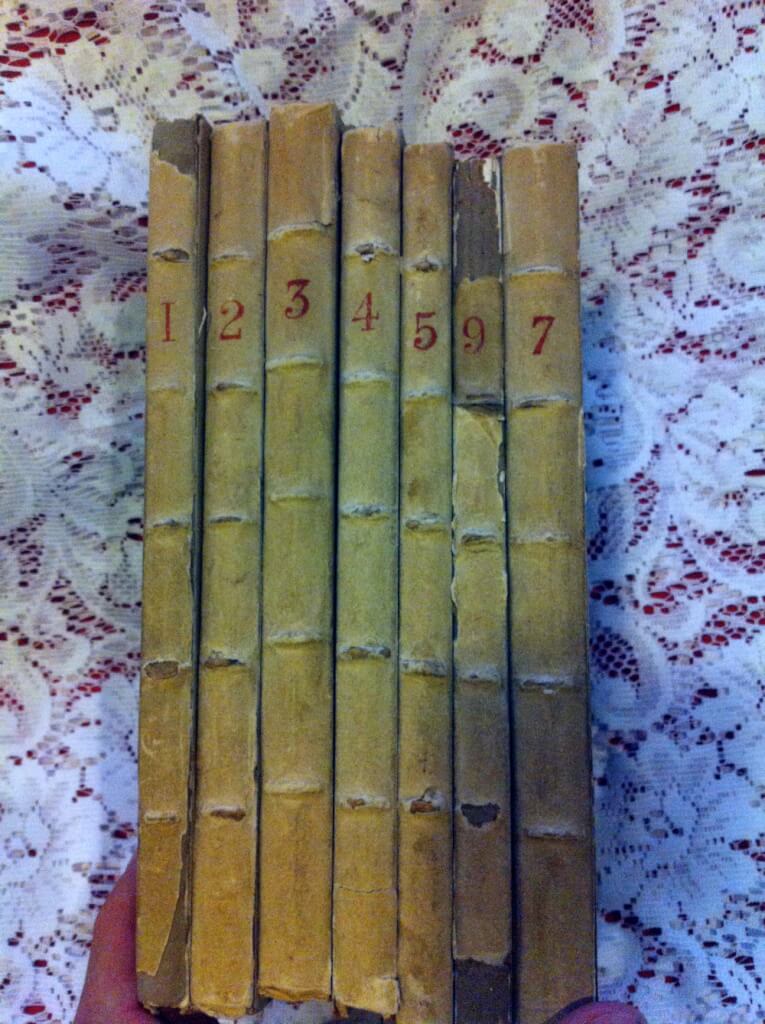
 compiled by Henry Thomas Buckle [false, most-likely Henry Spencer Ashbee] (Printed for G. Peacock, London, 1777 [actually John Camden Hotten, c. 1872-73]) 8" X 5.25", 7 vol. 67pp 84pp, 106pp, 83pp, 57pp, 54pp, 120pp, original publishers hard binding, 5 raised bands, deckled edges, binding very good, very good condition for age, tears and splits to spines, spines labeled with number #6 is upside down, bumping on corners, slight wear to boards, inner pages clean.
compiled by Henry Thomas Buckle [false, most-likely Henry Spencer Ashbee] (Printed for G. Peacock, London, 1777 [actually John Camden Hotten, c. 1872-73]) 8" X 5.25", 7 vol. 67pp 84pp, 106pp, 83pp, 57pp, 54pp, 120pp, original publishers hard binding, 5 raised bands, deckled edges, binding very good, very good condition for age, tears and splits to spines, spines labeled with number #6 is upside down, bumping on corners, slight wear to boards, inner pages clean. -
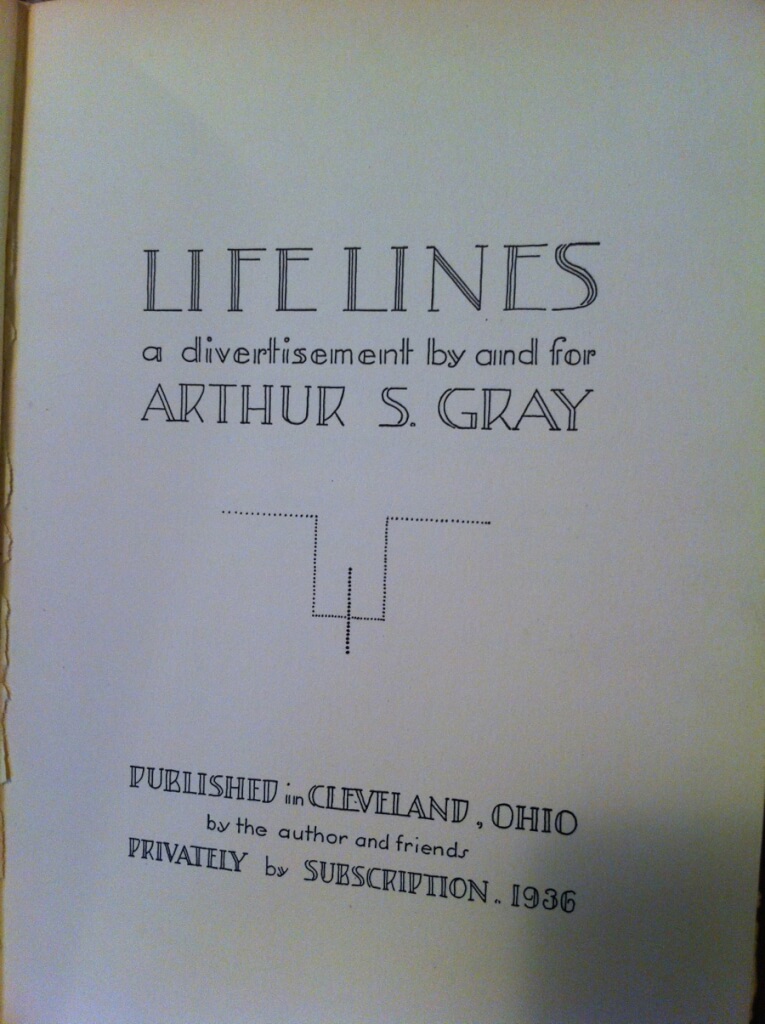
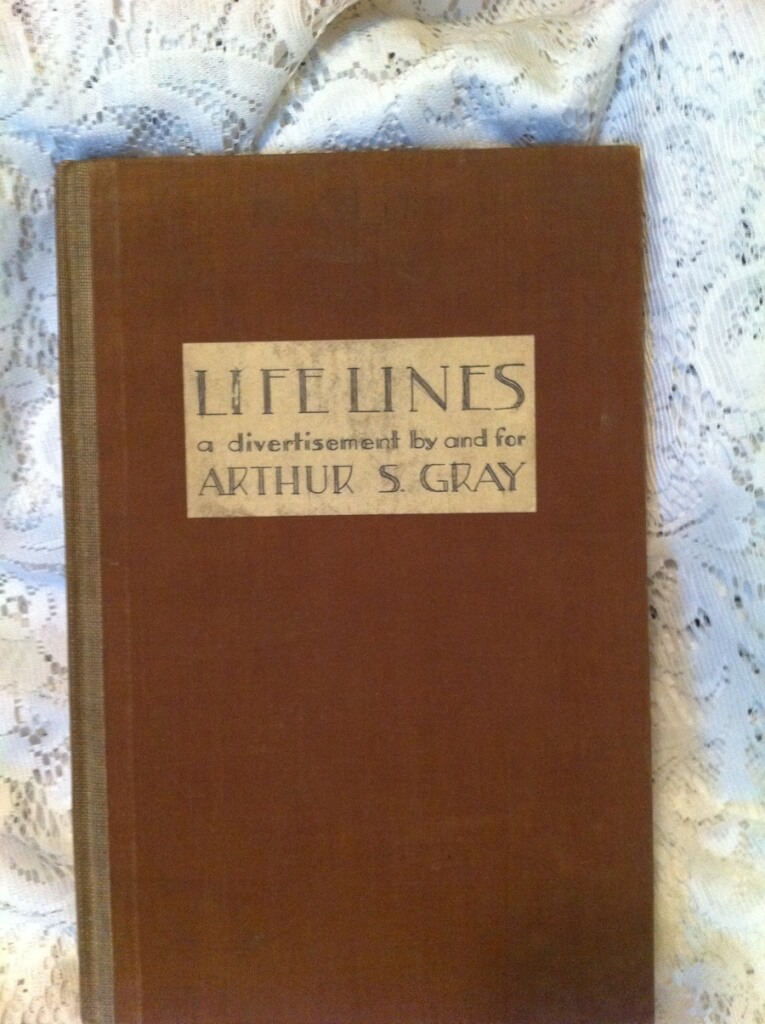 Life Lines, Arthur S. Gray ("Published in Cleveland, Ohio by the author and friends, Privately by Subscription, 1936") 10 1/8 X 6 3/4, 93pp, hardbound no DJ, deckle edges, good condition, slight soiling to boards The title page reads "Life Lines, a divertisement by and for Arthur S. Gray". Published in Cleveland, Ohio by the author and friends, Privately by Subscription, 1936". The author writes in his preface, "Because this book is a Michelangelo collection of poems and drawings done now and then for my diversion and satisfaction, it is necessary to announce that the pictures are not illustrations. Each drawing is a simple record of some particular and more or less unique quality which caught my attention and incited me to draw. After the prime reason, the urge to make something. I draw the way I do for two reasons: first to preserve the integrity of my powers of observation and reaction; second, to render that respect which is the natural right of an individual entity."
Life Lines, Arthur S. Gray ("Published in Cleveland, Ohio by the author and friends, Privately by Subscription, 1936") 10 1/8 X 6 3/4, 93pp, hardbound no DJ, deckle edges, good condition, slight soiling to boards The title page reads "Life Lines, a divertisement by and for Arthur S. Gray". Published in Cleveland, Ohio by the author and friends, Privately by Subscription, 1936". The author writes in his preface, "Because this book is a Michelangelo collection of poems and drawings done now and then for my diversion and satisfaction, it is necessary to announce that the pictures are not illustrations. Each drawing is a simple record of some particular and more or less unique quality which caught my attention and incited me to draw. After the prime reason, the urge to make something. I draw the way I do for two reasons: first to preserve the integrity of my powers of observation and reaction; second, to render that respect which is the natural right of an individual entity." -

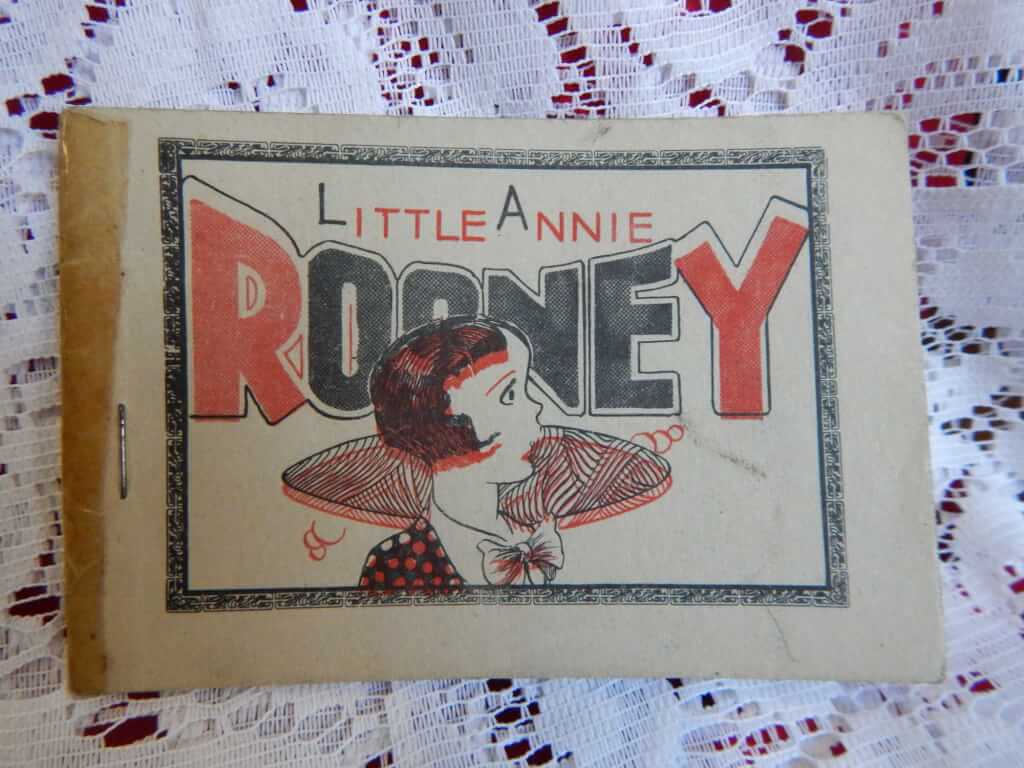 Little Annie Rooney, (np. nd.) 4.5" x 3", 8pp., pamphlet, stapled and taped Tijuana bibles (also known as eight-pagers, bluesies, gray-backs, Jiggs-and-Maggie books, jo-jo books, Tillie-and-Mac books, and two-by-fours) were little pornographic comic books produced in the United States from the 1920s to the early 1960s.
Little Annie Rooney, (np. nd.) 4.5" x 3", 8pp., pamphlet, stapled and taped Tijuana bibles (also known as eight-pagers, bluesies, gray-backs, Jiggs-and-Maggie books, jo-jo books, Tillie-and-Mac books, and two-by-fours) were little pornographic comic books produced in the United States from the 1920s to the early 1960s. -
 Mademoiselle De Maupin – Double Love, Theophile Gautier, illus. Clara Tice (Privately Printed for The Pierre Loüys Society, 1927 #67/1250) 6.5″x10″, 407pp., black spine over decorated boards, gilt titles and decorations on spine, binding loose but holding. In September 1833, Gautier was solicited to write a historical romance based on the life of French opera star Mlle. Maupin, who was a first-rate swordswoman and often went about disguised as a man. Originally, the story was to be about the historical La Maupin, who set fire to a convent for the love of another woman, but later retired to a convent herself, shortly before dying in her thirties. Gautier instead turned the plot into a simple love triangle between a man, d'Albert, and his mistress, Rosette, who both fall in love with Madelaine de Maupin, who is disguised as a man named Théodore. The message behind Gautier's version of the infamous legend is the fundamental pessimism about the human identity, and perhaps the entire Romantic age. The novel consists of seventeen chapters, most in the form of letters written by d'Albert or Madelaine. Most critics focus on the preface of the novel, which preached about art for art's sake through its dictum that "everything useful is ugly". Pierre Jules Théophile Gautier (1811 – 1872) was a French poet, dramatist, novelist, journalist, and art and literary critic. While an ardent defender of Romanticism, Gautier's work is difficult to classify and remains a point of reference for many subsequent literary traditions such as Parnassianism, Symbolism, Decadence and Modernism. He was widely esteemed by writers as disparate as Balzac, Baudelaire, the Goncourt brothers, Flaubert, Pound, Eliot, James, Proust and Wilde.
Mademoiselle De Maupin – Double Love, Theophile Gautier, illus. Clara Tice (Privately Printed for The Pierre Loüys Society, 1927 #67/1250) 6.5″x10″, 407pp., black spine over decorated boards, gilt titles and decorations on spine, binding loose but holding. In September 1833, Gautier was solicited to write a historical romance based on the life of French opera star Mlle. Maupin, who was a first-rate swordswoman and often went about disguised as a man. Originally, the story was to be about the historical La Maupin, who set fire to a convent for the love of another woman, but later retired to a convent herself, shortly before dying in her thirties. Gautier instead turned the plot into a simple love triangle between a man, d'Albert, and his mistress, Rosette, who both fall in love with Madelaine de Maupin, who is disguised as a man named Théodore. The message behind Gautier's version of the infamous legend is the fundamental pessimism about the human identity, and perhaps the entire Romantic age. The novel consists of seventeen chapters, most in the form of letters written by d'Albert or Madelaine. Most critics focus on the preface of the novel, which preached about art for art's sake through its dictum that "everything useful is ugly". Pierre Jules Théophile Gautier (1811 – 1872) was a French poet, dramatist, novelist, journalist, and art and literary critic. While an ardent defender of Romanticism, Gautier's work is difficult to classify and remains a point of reference for many subsequent literary traditions such as Parnassianism, Symbolism, Decadence and Modernism. He was widely esteemed by writers as disparate as Balzac, Baudelaire, the Goncourt brothers, Flaubert, Pound, Eliot, James, Proust and Wilde. -

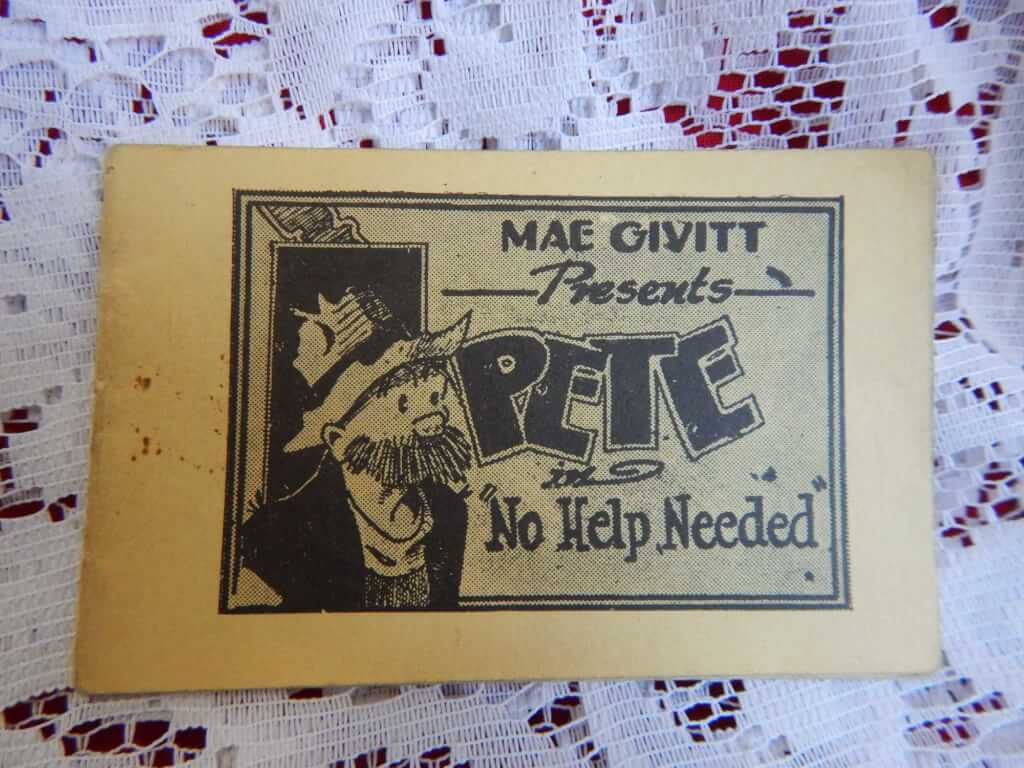 Mae Givitt presents Pete in "No Help Needed", (n.p. n.d.) 4.5" x 3", 8pp. pamphlet, stapled Tijuana bibles (also known as eight-pagers, bluesies, gray-backs, Jiggs-and-Maggie books, jo-jo books, Tillie-and-Mac books, and two-by-fours) were little pornographic comic books produced in the United States from the 1920s to the early 1960s.
Mae Givitt presents Pete in "No Help Needed", (n.p. n.d.) 4.5" x 3", 8pp. pamphlet, stapled Tijuana bibles (also known as eight-pagers, bluesies, gray-backs, Jiggs-and-Maggie books, jo-jo books, Tillie-and-Mac books, and two-by-fours) were little pornographic comic books produced in the United States from the 1920s to the early 1960s. -
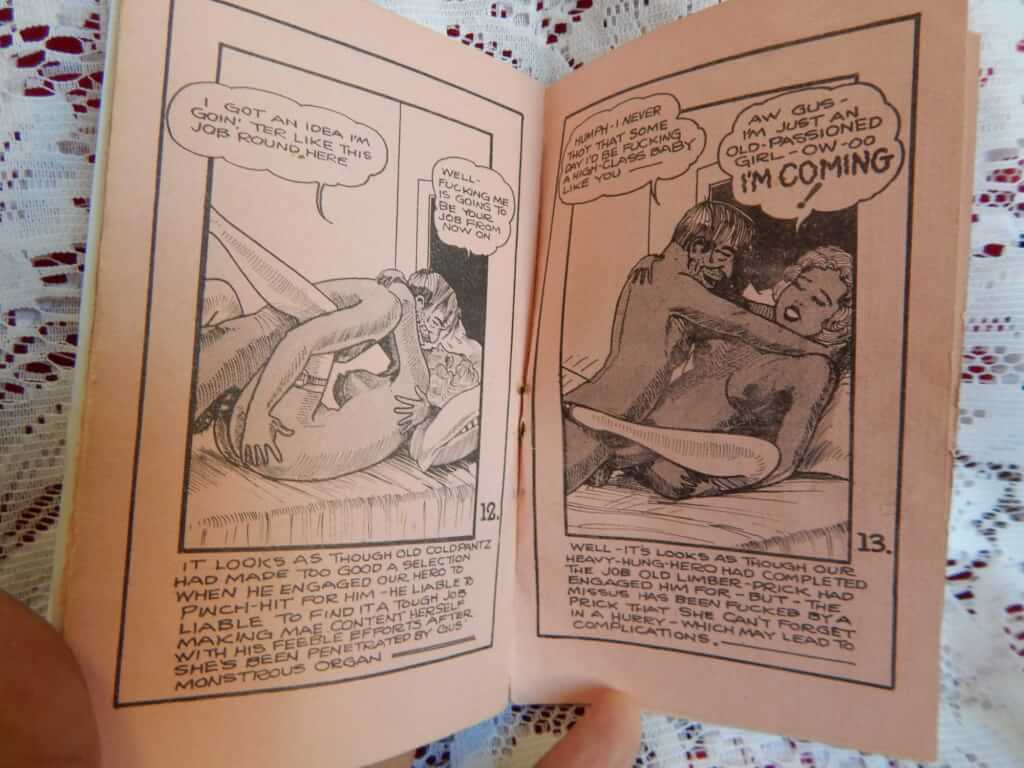
 Mae West and Will Rogers in "The Sod-Buster", (np. nd.) 3.25" x 6", 16pp. pamphlet, stapled In the style of a "Tijuana bible" but larger and with 16 pages (instead of the traditional 8). Cover art and back cover in black and red. Tijuana bibles (also known as eight-pagers, bluesies, gray-backs, Jiggs-and-Maggie books, jo-jo books, Tillie-and-Mac books, and two-by-fours) were little pornographic comic books produced in the United States from the 1920s to the early 1960s.
Mae West and Will Rogers in "The Sod-Buster", (np. nd.) 3.25" x 6", 16pp. pamphlet, stapled In the style of a "Tijuana bible" but larger and with 16 pages (instead of the traditional 8). Cover art and back cover in black and red. Tijuana bibles (also known as eight-pagers, bluesies, gray-backs, Jiggs-and-Maggie books, jo-jo books, Tillie-and-Mac books, and two-by-fours) were little pornographic comic books produced in the United States from the 1920s to the early 1960s. -
 Manual of Classical Erotology (De figuris veneris), Fred. Chas. Forberg (stated Julian Smithson M. A., and friends, 1884 [later pirated edition]) 9.25"x6", hardcover 1/4 maroon over marbled boards, xiii-248pp, good condition This is a pirated edition (most likely 1920-30) of the first known English translation of this work. The original Julian Smithson edition was limited to 100 copies. De figuris Veneris (On the figures of Venus) was an anthology of ancient Greek and ancient Roman writings on erotic topics, discussed objectively and classified and grouped by subject matter. It was first published by the German classicist Friedrich Karl Forberg in 1824 in Latin and Greek as a commentary to Antonio Beccadelli's (1394-1471) Hermaphroditus (commonly referred to as Antonii Panormitae Hermaphroditus), an erotic poem sequence of 1425 in renaissance Latin, though it was later also published as a separate work. In 1899 Forberg's work was translated into English and published by Charles Carrington as De figuris Veneris, Manual of classical erotology, and again in 1907 by Charles Hirsch, and into French, German and Spanish. The French edition by Alcide Bonneau was titled Manuel d’érotologie classique. One French edition of 1906 was illustrated by Édouard-Henri Avril, which concludes with a list of 95 sexual positions. Most of the editions were restricted to high society or censored; one of the copies edited in France was immediately deposited on the secret shelves of the Bibliothèque nationale de France.
Manual of Classical Erotology (De figuris veneris), Fred. Chas. Forberg (stated Julian Smithson M. A., and friends, 1884 [later pirated edition]) 9.25"x6", hardcover 1/4 maroon over marbled boards, xiii-248pp, good condition This is a pirated edition (most likely 1920-30) of the first known English translation of this work. The original Julian Smithson edition was limited to 100 copies. De figuris Veneris (On the figures of Venus) was an anthology of ancient Greek and ancient Roman writings on erotic topics, discussed objectively and classified and grouped by subject matter. It was first published by the German classicist Friedrich Karl Forberg in 1824 in Latin and Greek as a commentary to Antonio Beccadelli's (1394-1471) Hermaphroditus (commonly referred to as Antonii Panormitae Hermaphroditus), an erotic poem sequence of 1425 in renaissance Latin, though it was later also published as a separate work. In 1899 Forberg's work was translated into English and published by Charles Carrington as De figuris Veneris, Manual of classical erotology, and again in 1907 by Charles Hirsch, and into French, German and Spanish. The French edition by Alcide Bonneau was titled Manuel d’érotologie classique. One French edition of 1906 was illustrated by Édouard-Henri Avril, which concludes with a list of 95 sexual positions. Most of the editions were restricted to high society or censored; one of the copies edited in France was immediately deposited on the secret shelves of the Bibliothèque nationale de France. -
 Manual of Classical Erotology (de figuris Veneris) by Fred. Chas. Forberg, trans. Alcide Bonneau (Privately Printed for Viscount Julian Smithson M. A. and Friends [Charles Carrington], 1884, one of 100 copies) vol. 2 only, half-bound in tan vellum over marbled boards, spine is labeled "Carrington" who is the presumed publisher. Top edge gilt, other edges deckled, binding loose but holding. De figuris Veneris (On the figures of Venus) was an anthology of ancient Greek and ancient Roman writings on erotic topics, discussed objectively and classified and grouped by subject matter. It was first published by the German classicist Friedrich Karl Forberg in 1824 in Latin and Greek as a commentary to Antonio Beccadelli's (1394-1471) Hermaphroditus (commonly referred to as Antonii Panormitae Hermaphroditus), an erotic poem sequence of 1425 in renaissance Latin, though it was later also published as a separate work. First edition of this important parallel English, Latin and Greek version. This very rare edition was translated by Alcide Bonneau and published by Charles Carrington. Each page has latin (and where appropriate, Greek) on the right side and the English translation on the left. This is the second volume only and includes the following chapters: IV. —Of Masturbation V. —Of Cunnilingues VI. —Of Tribads VII. —Of Intercourse with Animals VIII. —Of Spintrian Postures (a list of 95 sexual positions) Considered the gold standard English translation of the time, this edition followed a poor piracy of 1882 badly translated from Liseux’s French edition of 1882. The name of the publisher is missing (most likely to avoid prosecution) and the limitation statement says 100 copies were "printed for Viscount Julian Smithson M. A., the Translator, and his Friends" and further states that "None of these Copies are for Sale" (also to avoid prosecution). Through later statements (mostly by association) we know it was published by Charles Carrington and translated by Alcide Bonneau. Carrington, in his 1902 catalogue, Forbidden Books wrote (thus promoting the sale of his clandestinely published book): ‘Were I a bookseller, I do not think I should ever take the trouble to print such a book as I have now before me. Here is a Latin work, full of notes, and bristling with Greek quotations. A most careful and masterly translation has been placed opposite every page of the original text, and it needs no literary critic to see that no one but a real classical scholar—an old Oxford man—could ever have successfully struggled with such a task... The two stout volumes have evidently been printed on the Continent—and for very good and valid reasons, as no English printer would dare to undertake such a work,— therefore each page would have to be submitted to the translator, at least three or four times, foreign compositors working mechanically. Many months would thus pass in wearisome proof-reading, and when at last the hundred copies are struck off, and each man receives his due, what margin of profit awaits the silly bookseller-publisher? He is insulted in every way and laughed at if he dares to wonder that the British Customs seize any copies...’ In 1882 Forberg's work was translated into English and published by Charles Carrington as De figuris Veneris, Manual of classical erotology, and again in 1907 by Charles Hirsch, and into French, German and Spanish. The French edition by Alcide Bonneau was titled Manuel d’érotologie classique. One French edition of 1906 was illustrated by Édouard-Henri Avril, which concludes with a list of 95 sexual positions. Most of the editions were restricted to high society or censored; one of the copies edited in France was immediately deposited on the secret shelves of the Bibliothèque nationale de France.
Manual of Classical Erotology (de figuris Veneris) by Fred. Chas. Forberg, trans. Alcide Bonneau (Privately Printed for Viscount Julian Smithson M. A. and Friends [Charles Carrington], 1884, one of 100 copies) vol. 2 only, half-bound in tan vellum over marbled boards, spine is labeled "Carrington" who is the presumed publisher. Top edge gilt, other edges deckled, binding loose but holding. De figuris Veneris (On the figures of Venus) was an anthology of ancient Greek and ancient Roman writings on erotic topics, discussed objectively and classified and grouped by subject matter. It was first published by the German classicist Friedrich Karl Forberg in 1824 in Latin and Greek as a commentary to Antonio Beccadelli's (1394-1471) Hermaphroditus (commonly referred to as Antonii Panormitae Hermaphroditus), an erotic poem sequence of 1425 in renaissance Latin, though it was later also published as a separate work. First edition of this important parallel English, Latin and Greek version. This very rare edition was translated by Alcide Bonneau and published by Charles Carrington. Each page has latin (and where appropriate, Greek) on the right side and the English translation on the left. This is the second volume only and includes the following chapters: IV. —Of Masturbation V. —Of Cunnilingues VI. —Of Tribads VII. —Of Intercourse with Animals VIII. —Of Spintrian Postures (a list of 95 sexual positions) Considered the gold standard English translation of the time, this edition followed a poor piracy of 1882 badly translated from Liseux’s French edition of 1882. The name of the publisher is missing (most likely to avoid prosecution) and the limitation statement says 100 copies were "printed for Viscount Julian Smithson M. A., the Translator, and his Friends" and further states that "None of these Copies are for Sale" (also to avoid prosecution). Through later statements (mostly by association) we know it was published by Charles Carrington and translated by Alcide Bonneau. Carrington, in his 1902 catalogue, Forbidden Books wrote (thus promoting the sale of his clandestinely published book): ‘Were I a bookseller, I do not think I should ever take the trouble to print such a book as I have now before me. Here is a Latin work, full of notes, and bristling with Greek quotations. A most careful and masterly translation has been placed opposite every page of the original text, and it needs no literary critic to see that no one but a real classical scholar—an old Oxford man—could ever have successfully struggled with such a task... The two stout volumes have evidently been printed on the Continent—and for very good and valid reasons, as no English printer would dare to undertake such a work,— therefore each page would have to be submitted to the translator, at least three or four times, foreign compositors working mechanically. Many months would thus pass in wearisome proof-reading, and when at last the hundred copies are struck off, and each man receives his due, what margin of profit awaits the silly bookseller-publisher? He is insulted in every way and laughed at if he dares to wonder that the British Customs seize any copies...’ In 1882 Forberg's work was translated into English and published by Charles Carrington as De figuris Veneris, Manual of classical erotology, and again in 1907 by Charles Hirsch, and into French, German and Spanish. The French edition by Alcide Bonneau was titled Manuel d’érotologie classique. One French edition of 1906 was illustrated by Édouard-Henri Avril, which concludes with a list of 95 sexual positions. Most of the editions were restricted to high society or censored; one of the copies edited in France was immediately deposited on the secret shelves of the Bibliothèque nationale de France. -

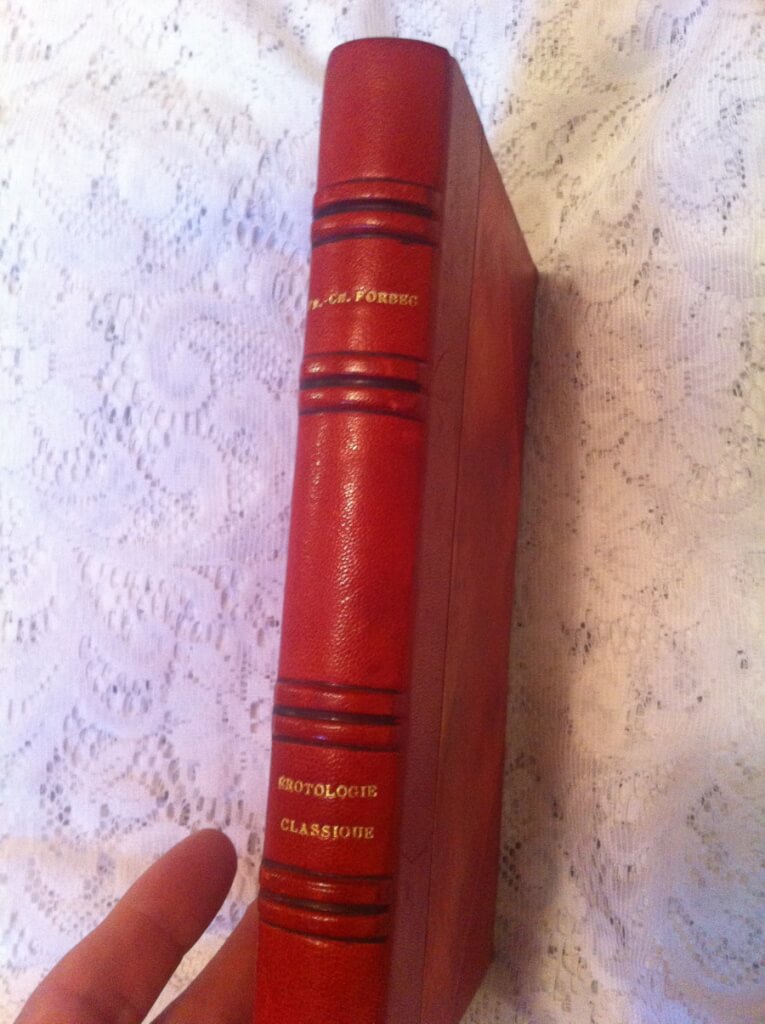 Manuel D'Érotologie Classique (de figuris Veneris) by Fred. Chas. Forberg, trans. Alcide Bonneau (Imprimé pour René Bonnel, Paris, 1933, #123/500) 6" x 9.25", 223pp, three quarter red leather, gilt titles on spine, 4 raised double bands, near fine condition, ribbon intact, hand-laid Arches paper (identifying watermarks), original paper covers bound in. Rene Bonnel, the publisher of this edition, was one of the foremost publishers of finely printed illegal erotica in the 1930's. This work was openly published and is no exception to the quality of his books. De figuris Veneris (On the figures of Venus) was an anthology of ancient Greek and ancient Roman writings on erotic topics, discussed objectively and classified and grouped by subject matter. (I. Of Copulation, II. Of Pederastia, III. Of Irrumation, IV. Of Masturbation, V. Of Cunnilingues, VI. Of Tribads, VII. Of Intercourse with Animals, VIII. Of Spintrian Postures) It was first published by the German classicist Friedrich Karl Forberg in 1824 in Latin and Greek as “Antonii Panormitae Hermaphroditus”, an erotic poem sequence in renaissance Latin. Forberg later reprinted it as “Manuel D’Érotologie Classique (de figuris Veneris)”. It was translated into English (published by Charles Carrington in 1899 and again by Charles Hirsch in 1907), French and German (one French edition was illustrated by Édouard-Henri Avril [Paul Avril]). It concludes with a list of 95 sexual positions. In 1899 Forberg's work was translated into English and published by Charles Carrington as De figuris Veneris, Manual of classical erotology, and again in 1907 by Charles Hirsch, and into French, German and Spanish. The French edition by Alcide Bonneau was titled Manuel d’érotologie classique. One French edition of 1906 was illustrated by Édouard-Henri Avril, which concludes with a list of 95 sexual positions. Most of the editions were restricted to high society or censored; one of the copies edited in France was immediately deposited on the secret shelves of the Bibliothèque nationale de France.
Manuel D'Érotologie Classique (de figuris Veneris) by Fred. Chas. Forberg, trans. Alcide Bonneau (Imprimé pour René Bonnel, Paris, 1933, #123/500) 6" x 9.25", 223pp, three quarter red leather, gilt titles on spine, 4 raised double bands, near fine condition, ribbon intact, hand-laid Arches paper (identifying watermarks), original paper covers bound in. Rene Bonnel, the publisher of this edition, was one of the foremost publishers of finely printed illegal erotica in the 1930's. This work was openly published and is no exception to the quality of his books. De figuris Veneris (On the figures of Venus) was an anthology of ancient Greek and ancient Roman writings on erotic topics, discussed objectively and classified and grouped by subject matter. (I. Of Copulation, II. Of Pederastia, III. Of Irrumation, IV. Of Masturbation, V. Of Cunnilingues, VI. Of Tribads, VII. Of Intercourse with Animals, VIII. Of Spintrian Postures) It was first published by the German classicist Friedrich Karl Forberg in 1824 in Latin and Greek as “Antonii Panormitae Hermaphroditus”, an erotic poem sequence in renaissance Latin. Forberg later reprinted it as “Manuel D’Érotologie Classique (de figuris Veneris)”. It was translated into English (published by Charles Carrington in 1899 and again by Charles Hirsch in 1907), French and German (one French edition was illustrated by Édouard-Henri Avril [Paul Avril]). It concludes with a list of 95 sexual positions. In 1899 Forberg's work was translated into English and published by Charles Carrington as De figuris Veneris, Manual of classical erotology, and again in 1907 by Charles Hirsch, and into French, German and Spanish. The French edition by Alcide Bonneau was titled Manuel d’érotologie classique. One French edition of 1906 was illustrated by Édouard-Henri Avril, which concludes with a list of 95 sexual positions. Most of the editions were restricted to high society or censored; one of the copies edited in France was immediately deposited on the secret shelves of the Bibliothèque nationale de France. -
 Manuel d'érotologie classique (De figuris veneris). Traduit littéralement du latin par Isidore Liseux et illustré de 20 compositions originales, by Fred. Chas. [translated by d'Alcide Bonneau and not Liseux as noted] (np [Charles Hirsch], Paris, 1906, #106/500 one of 120 printed on Hollande paper) 8.5" X 11.5", viii+167(1)pp, bound in half burgundy morocco over marbled crimson boards, gilt titles and decorations on spine, 5 raised bands, good+ condition, some bumping/rubbing to boards, very famous b&w frontispiece and 19 illustrations by Paul Avril, some soiling/foxing to illustrations, a beautiful and rare book in very good condition. De figuris Veneris (On the figures of Venus) was an anthology of ancient Greek and ancient Roman writings on erotic topics, discussed objectively and classified and grouped by subject matter. It was first published by the German classicist Friedrich Karl Forberg in 1824 in Latin and Greek as a commentary to Antonio Beccadelli's (1394-1471) Hermaphroditus (commonly referred to as Antonii Panormitae Hermaphroditus), an erotic poem sequence of 1425 in renaissance Latin, though it was later also published as a separate work. Chapters are: I. Of Copulation II. Of Pederastia III. Of Irrumation IV. Of Masturbation V. Of Cunnilingues VI. Of Tribads VII. Of Intercourse with Animals VIII. Of Spintrian Postures In 1882 Forberg's work was translated into English and published by Charles Carrington as De figuris Veneris, Manual of classical erotology, and again in 1907 by Charles Hirsch, and into French, German and Spanish. The French edition by Alcide Bonneau was titled Manuel d’érotologie classique. One French edition of 1906 was illustrated by Édouard-Henri Avril, which concludes with a list of 95 sexual positions. Most of the editions were restricted to high society or censored; one of the copies edited in France was immediately deposited on the secret shelves of the Bibliothèque nationale de France. Hirsch's printed 500 copies of this 1906 edition. 20 were on Japan paper, 120 were on Holland paper, 340 were are Arches paper, and 20 were on "anglais" paper. This is one of 120 on Holland paper.
Manuel d'érotologie classique (De figuris veneris). Traduit littéralement du latin par Isidore Liseux et illustré de 20 compositions originales, by Fred. Chas. [translated by d'Alcide Bonneau and not Liseux as noted] (np [Charles Hirsch], Paris, 1906, #106/500 one of 120 printed on Hollande paper) 8.5" X 11.5", viii+167(1)pp, bound in half burgundy morocco over marbled crimson boards, gilt titles and decorations on spine, 5 raised bands, good+ condition, some bumping/rubbing to boards, very famous b&w frontispiece and 19 illustrations by Paul Avril, some soiling/foxing to illustrations, a beautiful and rare book in very good condition. De figuris Veneris (On the figures of Venus) was an anthology of ancient Greek and ancient Roman writings on erotic topics, discussed objectively and classified and grouped by subject matter. It was first published by the German classicist Friedrich Karl Forberg in 1824 in Latin and Greek as a commentary to Antonio Beccadelli's (1394-1471) Hermaphroditus (commonly referred to as Antonii Panormitae Hermaphroditus), an erotic poem sequence of 1425 in renaissance Latin, though it was later also published as a separate work. Chapters are: I. Of Copulation II. Of Pederastia III. Of Irrumation IV. Of Masturbation V. Of Cunnilingues VI. Of Tribads VII. Of Intercourse with Animals VIII. Of Spintrian Postures In 1882 Forberg's work was translated into English and published by Charles Carrington as De figuris Veneris, Manual of classical erotology, and again in 1907 by Charles Hirsch, and into French, German and Spanish. The French edition by Alcide Bonneau was titled Manuel d’érotologie classique. One French edition of 1906 was illustrated by Édouard-Henri Avril, which concludes with a list of 95 sexual positions. Most of the editions were restricted to high society or censored; one of the copies edited in France was immediately deposited on the secret shelves of the Bibliothèque nationale de France. Hirsch's printed 500 copies of this 1906 edition. 20 were on Japan paper, 120 were on Holland paper, 340 were are Arches paper, and 20 were on "anglais" paper. This is one of 120 on Holland paper. -
 Manuel d'érotologie classique (De figuris veneris). Traduit littéralement du latin par Isidore Liseux et illustré de 20 compositions originales, by Fred. Chas. [translated by d'Alcide Bonneau and not Liseux as noted] (np [Charles Hirsch], Paris, 1906, #106/500 one of 120 printed on Hollande paper) 8.5" X 11.5", viii+167(1)pp, bound in half burgundy morocco over marbled crimson boards, gilt titles and decorations on spine, 5 raised bands, good+ condition, some bumping/rubbing to boards, very famous b&w frontispiece and 19 illustrations by Paul Avril, some soiling/foxing to illustrations, a beautiful and rare book in very good condition. De figuris Veneris (On the figures of Venus) was an anthology of ancient Greek and ancient Roman writings on erotic topics, discussed objectively and classified and grouped by subject matter. It was first published by the German classicist Friedrich Karl Forberg in 1824 in Latin and Greek as a commentary to Antonio Beccadelli's (1394-1471) Hermaphroditus (commonly referred to as Antonii Panormitae Hermaphroditus), an erotic poem sequence of 1425 in renaissance Latin, though it was later also published as a separate work. Chapters are: I. Of Copulation II. Of Pederastia III. Of Irrumation IV. Of Masturbation V. Of Cunnilingues VI. Of Tribads VII. Of Intercourse with Animals VIII. Of Spintrian Postures In 1882 Forberg's work was translated into English and published by Charles Carrington as De figuris Veneris, Manual of classical erotology, and again in 1907 by Charles Hirsch, and into French, German and Spanish. The French edition by Alcide Bonneau was titled Manuel d’érotologie classique. One French edition of 1906 was illustrated by Édouard-Henri Avril, which concludes with a list of 95 sexual positions. Most of the editions were restricted to high society or censored; one of the copies edited in France was immediately deposited on the secret shelves of the Bibliothèque nationale de France. Hirsch's printed 500 copies of this 1906 edition. 20 were on Japan paper, 120 were on Holland paper, 340 were are Arches paper, and 20 were on "anglais" paper. This is one of 120 on Holland paper.
Manuel d'érotologie classique (De figuris veneris). Traduit littéralement du latin par Isidore Liseux et illustré de 20 compositions originales, by Fred. Chas. [translated by d'Alcide Bonneau and not Liseux as noted] (np [Charles Hirsch], Paris, 1906, #106/500 one of 120 printed on Hollande paper) 8.5" X 11.5", viii+167(1)pp, bound in half burgundy morocco over marbled crimson boards, gilt titles and decorations on spine, 5 raised bands, good+ condition, some bumping/rubbing to boards, very famous b&w frontispiece and 19 illustrations by Paul Avril, some soiling/foxing to illustrations, a beautiful and rare book in very good condition. De figuris Veneris (On the figures of Venus) was an anthology of ancient Greek and ancient Roman writings on erotic topics, discussed objectively and classified and grouped by subject matter. It was first published by the German classicist Friedrich Karl Forberg in 1824 in Latin and Greek as a commentary to Antonio Beccadelli's (1394-1471) Hermaphroditus (commonly referred to as Antonii Panormitae Hermaphroditus), an erotic poem sequence of 1425 in renaissance Latin, though it was later also published as a separate work. Chapters are: I. Of Copulation II. Of Pederastia III. Of Irrumation IV. Of Masturbation V. Of Cunnilingues VI. Of Tribads VII. Of Intercourse with Animals VIII. Of Spintrian Postures In 1882 Forberg's work was translated into English and published by Charles Carrington as De figuris Veneris, Manual of classical erotology, and again in 1907 by Charles Hirsch, and into French, German and Spanish. The French edition by Alcide Bonneau was titled Manuel d’érotologie classique. One French edition of 1906 was illustrated by Édouard-Henri Avril, which concludes with a list of 95 sexual positions. Most of the editions were restricted to high society or censored; one of the copies edited in France was immediately deposited on the secret shelves of the Bibliothèque nationale de France. Hirsch's printed 500 copies of this 1906 edition. 20 were on Japan paper, 120 were on Holland paper, 340 were are Arches paper, and 20 were on "anglais" paper. This is one of 120 on Holland paper. -
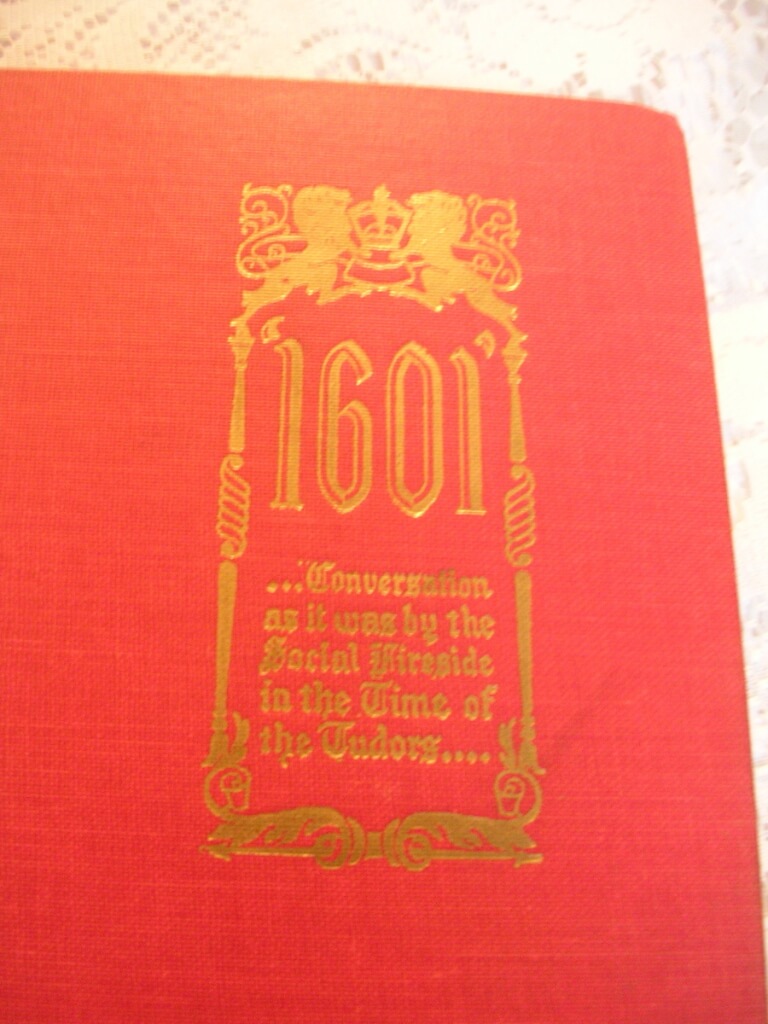
 Mark Twain's [Date, 1601.] Conversation As it was by the Social Fireside in the Time of the Tudors, Mark Twain, "With an Illuminating Introduction, Facetions Footnotes and a Bibliography by Franklin J. Meine" (Privately Printed for Lyle Stuart, New York, nd [c. 1939]) 9 1/2" X 6 1/4", 80pp, hardbound no DJ with slipcase, red cloth boards with gilt lettering and decoration, book very good condition, slight soiling on spine, slipcover good condition, faded spine and soiled but intact [Date: 1601.] Conversation, as it was the Social Fireside, in the Time of the Tudors is the title of a humorous work by Mark Twain, first published anonymously in 1880. Edward Wagenknecht once referred to it as "the most famous piece of pornography in American literature." Its content is irreverent and vulgar rather than obscene, and its purpose seems to be comedic shock rather than erotic arousal. It would thus qualify as ribaldry rather than pornography. Twain wrote 1601 during the summer of 1876 (between writing Tom Sawyer and Huckleberry Finn), for the amusement of his closest friend, Reverend Joseph Twichell, 1601 was later first published by another friend, John Hay, who later became Secretary of State. The work circulated among printers (due to it's often archaic type font) and many small batches were printed, however the authorship of the work remained unverified until Twain finally acknowledged he wrote it in 1906.
Mark Twain's [Date, 1601.] Conversation As it was by the Social Fireside in the Time of the Tudors, Mark Twain, "With an Illuminating Introduction, Facetions Footnotes and a Bibliography by Franklin J. Meine" (Privately Printed for Lyle Stuart, New York, nd [c. 1939]) 9 1/2" X 6 1/4", 80pp, hardbound no DJ with slipcase, red cloth boards with gilt lettering and decoration, book very good condition, slight soiling on spine, slipcover good condition, faded spine and soiled but intact [Date: 1601.] Conversation, as it was the Social Fireside, in the Time of the Tudors is the title of a humorous work by Mark Twain, first published anonymously in 1880. Edward Wagenknecht once referred to it as "the most famous piece of pornography in American literature." Its content is irreverent and vulgar rather than obscene, and its purpose seems to be comedic shock rather than erotic arousal. It would thus qualify as ribaldry rather than pornography. Twain wrote 1601 during the summer of 1876 (between writing Tom Sawyer and Huckleberry Finn), for the amusement of his closest friend, Reverend Joseph Twichell, 1601 was later first published by another friend, John Hay, who later became Secretary of State. The work circulated among printers (due to it's often archaic type font) and many small batches were printed, however the authorship of the work remained unverified until Twain finally acknowledged he wrote it in 1906. -
Out of stock
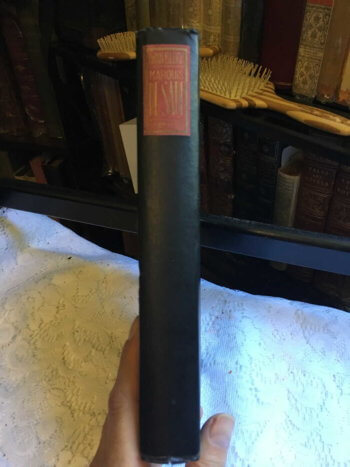
 Marquis de Sade | The Man and His Age | studies in the history of the culture and morals of the eighteenth century, Dr. Iwan Bloch, translated by James Bruce (Julian Press, 1931, [first american edition]) 6 .5"x9.5", 296pp, hardbound, black boards, red and gilt title on spine, some bumps and wear, good condition for age. Iwan Bloch (1872-1922), the “father of sexology”, was a Berlin dermatologist. His many socio-cultural studies in sexology earned him an international reputation as a medical historian. He also discovered de Sade’s manuscript of the “120 days of Sodom” in 1904, which had been believed to be lost. Together with Magnus Hirschfeld and Albert Eulenburg, Bloch proposed the new concept of a science of sexuality: Sexualwissenschaft or sexology. In 1906 he wrote Das Sexualleben unserer Zeit in seinen Beziehungen zur modernen Kultur [The Sexual Life of our Time in its Relations to Modern Civilization], a complete encyclopedia of the sexual sciences in their relation to modern civilization. According to Sigmund Freud, Bloch's studies were instrumental in the development of the anthropological approach to the theory of sexuality. For example, before Bloch, homosexuality was analyzed using a pathological approach.
Marquis de Sade | The Man and His Age | studies in the history of the culture and morals of the eighteenth century, Dr. Iwan Bloch, translated by James Bruce (Julian Press, 1931, [first american edition]) 6 .5"x9.5", 296pp, hardbound, black boards, red and gilt title on spine, some bumps and wear, good condition for age. Iwan Bloch (1872-1922), the “father of sexology”, was a Berlin dermatologist. His many socio-cultural studies in sexology earned him an international reputation as a medical historian. He also discovered de Sade’s manuscript of the “120 days of Sodom” in 1904, which had been believed to be lost. Together with Magnus Hirschfeld and Albert Eulenburg, Bloch proposed the new concept of a science of sexuality: Sexualwissenschaft or sexology. In 1906 he wrote Das Sexualleben unserer Zeit in seinen Beziehungen zur modernen Kultur [The Sexual Life of our Time in its Relations to Modern Civilization], a complete encyclopedia of the sexual sciences in their relation to modern civilization. According to Sigmund Freud, Bloch's studies were instrumental in the development of the anthropological approach to the theory of sexuality. For example, before Bloch, homosexuality was analyzed using a pathological approach. -
 Marriage Ceremonies and Priapic Rites in India and the East, "by a member of the Royal Asiatic Society" (Printed for Private Circulation Only, 1909) 9" X 7.25", 107pp., hardbound, blue cloth boards, gilt and red titles on spine, top edge gilt. Very good condition, binding good hinges good. From forward: "The sentiments of Hindu Sages that follow have been chosen mostly from well-known books. They are instructive in many respects, and pretend to be nothing but a collection of notes made by the author while seeking a solution to his own doubts and difficulties... So this monograph--the subject of which is the one most intimately bound up with the life of every man and woman--will be found useful and interesting, both to the Aryans of the East, and to the Aryans of the West, and further needs no apology for its appearance."
Marriage Ceremonies and Priapic Rites in India and the East, "by a member of the Royal Asiatic Society" (Printed for Private Circulation Only, 1909) 9" X 7.25", 107pp., hardbound, blue cloth boards, gilt and red titles on spine, top edge gilt. Very good condition, binding good hinges good. From forward: "The sentiments of Hindu Sages that follow have been chosen mostly from well-known books. They are instructive in many respects, and pretend to be nothing but a collection of notes made by the author while seeking a solution to his own doubts and difficulties... So this monograph--the subject of which is the one most intimately bound up with the life of every man and woman--will be found useful and interesting, both to the Aryans of the East, and to the Aryans of the West, and further needs no apology for its appearance." -
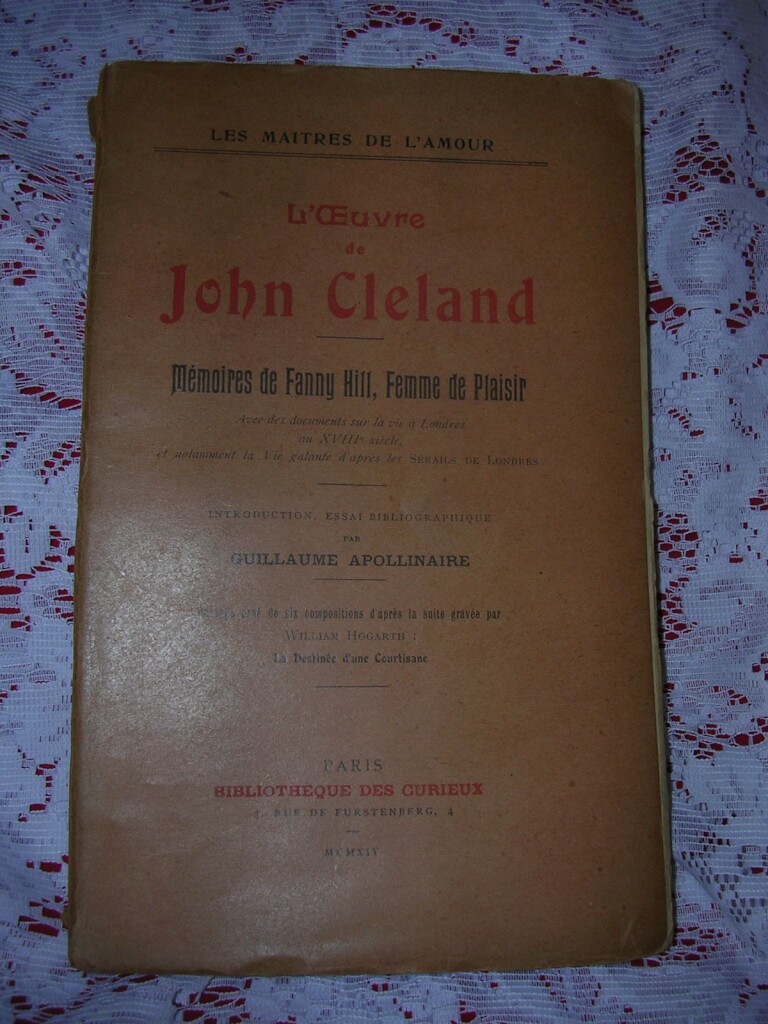
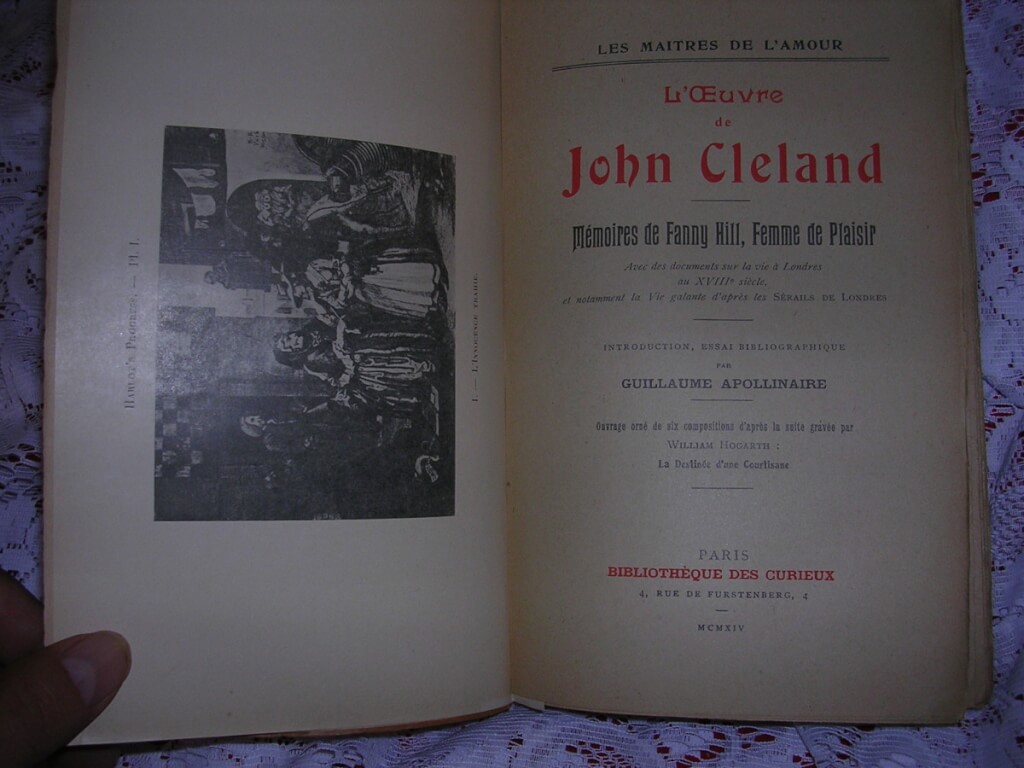 Mémoires de Fanny Hill, Femme de Plaisir, John Cleland (Bibliothèque Des Curieux, Paris, 1914) 9" X 5 5/8", 281pp, soft bound, deckle edges, many pages uncut/unread, "decorated with six compositions from the series of engravings by William Hogarth: La Destin_e d'une Courtisane", fair condition, good considering it's age, pages yellow and small rips near spine Written while the author was in debtor's prison in London and first published in 1749, Fanny Hill is considered the first original English prose pornography, and the first pornography to use the form of the novel. One of the most prosecuted and banned books in history, it has become a synonym for obscenity. This book appeared as a part of a series "Les Maitres de l'amour" (The Masters of Love). "With documents about life in London in the eighteenth century, including Life after the gallant Serails of London, Introduction and bibliography by Guillaume Apollinaire"
Mémoires de Fanny Hill, Femme de Plaisir, John Cleland (Bibliothèque Des Curieux, Paris, 1914) 9" X 5 5/8", 281pp, soft bound, deckle edges, many pages uncut/unread, "decorated with six compositions from the series of engravings by William Hogarth: La Destin_e d'une Courtisane", fair condition, good considering it's age, pages yellow and small rips near spine Written while the author was in debtor's prison in London and first published in 1749, Fanny Hill is considered the first original English prose pornography, and the first pornography to use the form of the novel. One of the most prosecuted and banned books in history, it has become a synonym for obscenity. This book appeared as a part of a series "Les Maitres de l'amour" (The Masters of Love). "With documents about life in London in the eighteenth century, including Life after the gallant Serails of London, Introduction and bibliography by Guillaume Apollinaire" -
 Memoirs of a Woman of Pleasure or The Life of Fanny Hill, John Cleland (Hoboken, np, 1929 [Philadelphia?] limited edition #621/700 first edition) 5 3/4″ X 8 1/4″, 211pp, quarter-bound red cloth over decorated boards, white label affixed to spine, color illustrations (rare) in an “art deco” style in similar to Aubrey Beardsley [or Elliot Dodd], excellent condition for age. Written while the author was in debtor’s prison in London and first published in 1749, Fanny Hill is considered the first original English prose pornography, and the first pornography to use the form of the novel. One of the most prosecuted and banned books in history, it has become a synonym for obscenity. The Hoboken copies of Fanny Hill are quite rare. This is the first edition original published c. 1929 with color illustrations and is extremely rare. An other edition appeared c. 1932 with the illustrations in black and white. It is unknown who the artist is but the illustrations are quite detailed and good.
Memoirs of a Woman of Pleasure or The Life of Fanny Hill, John Cleland (Hoboken, np, 1929 [Philadelphia?] limited edition #621/700 first edition) 5 3/4″ X 8 1/4″, 211pp, quarter-bound red cloth over decorated boards, white label affixed to spine, color illustrations (rare) in an “art deco” style in similar to Aubrey Beardsley [or Elliot Dodd], excellent condition for age. Written while the author was in debtor’s prison in London and first published in 1749, Fanny Hill is considered the first original English prose pornography, and the first pornography to use the form of the novel. One of the most prosecuted and banned books in history, it has become a synonym for obscenity. The Hoboken copies of Fanny Hill are quite rare. This is the first edition original published c. 1929 with color illustrations and is extremely rare. An other edition appeared c. 1932 with the illustrations in black and white. It is unknown who the artist is but the illustrations are quite detailed and good. -
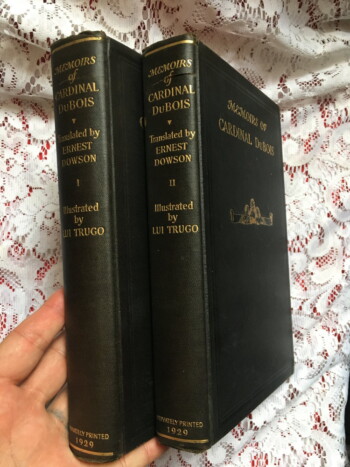
 Memoirs of Cardinal Dubois | A complete unabridged translation from the French by Ernest Dowson | Embellished with photogravure portraits of Cardinal Dubois and the Duc d'Orleans, together with twelve full page drawings by Lui Trugo (Privately Printed for Subscribers [Art Studio Press], New York, 1929, #264/1500) 9.75"x6.5", 2 volumes on hand laid paper, xvi-376pp, viii-349pp, black cloth with gilt titles and decorations, top-edge inked, others deckled, good condition bumped corners and a few scuff marks. Two different ex libris Alan K Dolliver bookplates inside front covers of both books. According to the publisher, the original manuscript which was written entirely in Dubois hand was stolen by his secretary Lavergne after his death in 1723. It was later discovered of its literary value that Lavergne attempted to sell the manuscript. He was found and arrested. They later fell into the hands of Comte de Maurepas, then upon his death they were passed on to an anonymous writer named Mercier (possibly M. Paul Laroix) whose family had it published in 1829. The manuscript then became lost. In 1899 and English version of the book translated by Ernest Christopher Dowson, was published by the notorious pornographer, Leonard Smithers & Co. This is, presumably a reprinting of that translation. Guillaume Dubois (1656-1723), a son of a country doctor, rose from humble beginnings to positions of power and high honor in government and in the Catholic Church. He is best known for negotiating the Triple Alliance of 1717 between France, the Dutch Republic and Great Britain against their mutual enemy, Spain. Considered one of the four great French Cardinal-Ministers (Richelieu, Mazarin, Dubois, and Fleury). His ecclesiastical career left a great deal to be desired. Although there is no proof of the prevalent assertion that he got secretly married, his licentiousness, and notorious impiety, even at the time of his death, make it evident that he pursued and used ecclesiastical dignities principally to enhance his political position and prestige. Eventually in 1721, Du Bois was created cardinal. He had the reputation of a libertine and adventurer and made plenty of enemies. One of his rivals was charged at creating his portrait, the Duc de Saint-Simon, who was said to have placed a painting of Dubois in his lavatory. Saint-Simon had this to say about the Cardinal: "He was a little, pitiful, wizened, herring-gutted man, in a flaxen wig, with a weasel's face, brightened by some intellect. All the vices - perfidy, avarice, debauchery, ambition, flattery - fought within him for the mastery. He was so consummate a liar that, when taken in the fact, he could brazenly deny it. Even his wit and knowledge of the world were spoiled, and his affected gaiety was touched with sadness, by the odour of falsehood which escaped through every pore of his body." This famous picture is certainly biased. Dubois was unscrupulous, but so were his contemporaries, and whatever vices he had, he forged a European peace that, with the exception of small, restrained military expeditions against the Austrian Habsburgs, would last for a quarter of a century.
Memoirs of Cardinal Dubois | A complete unabridged translation from the French by Ernest Dowson | Embellished with photogravure portraits of Cardinal Dubois and the Duc d'Orleans, together with twelve full page drawings by Lui Trugo (Privately Printed for Subscribers [Art Studio Press], New York, 1929, #264/1500) 9.75"x6.5", 2 volumes on hand laid paper, xvi-376pp, viii-349pp, black cloth with gilt titles and decorations, top-edge inked, others deckled, good condition bumped corners and a few scuff marks. Two different ex libris Alan K Dolliver bookplates inside front covers of both books. According to the publisher, the original manuscript which was written entirely in Dubois hand was stolen by his secretary Lavergne after his death in 1723. It was later discovered of its literary value that Lavergne attempted to sell the manuscript. He was found and arrested. They later fell into the hands of Comte de Maurepas, then upon his death they were passed on to an anonymous writer named Mercier (possibly M. Paul Laroix) whose family had it published in 1829. The manuscript then became lost. In 1899 and English version of the book translated by Ernest Christopher Dowson, was published by the notorious pornographer, Leonard Smithers & Co. This is, presumably a reprinting of that translation. Guillaume Dubois (1656-1723), a son of a country doctor, rose from humble beginnings to positions of power and high honor in government and in the Catholic Church. He is best known for negotiating the Triple Alliance of 1717 between France, the Dutch Republic and Great Britain against their mutual enemy, Spain. Considered one of the four great French Cardinal-Ministers (Richelieu, Mazarin, Dubois, and Fleury). His ecclesiastical career left a great deal to be desired. Although there is no proof of the prevalent assertion that he got secretly married, his licentiousness, and notorious impiety, even at the time of his death, make it evident that he pursued and used ecclesiastical dignities principally to enhance his political position and prestige. Eventually in 1721, Du Bois was created cardinal. He had the reputation of a libertine and adventurer and made plenty of enemies. One of his rivals was charged at creating his portrait, the Duc de Saint-Simon, who was said to have placed a painting of Dubois in his lavatory. Saint-Simon had this to say about the Cardinal: "He was a little, pitiful, wizened, herring-gutted man, in a flaxen wig, with a weasel's face, brightened by some intellect. All the vices - perfidy, avarice, debauchery, ambition, flattery - fought within him for the mastery. He was so consummate a liar that, when taken in the fact, he could brazenly deny it. Even his wit and knowledge of the world were spoiled, and his affected gaiety was touched with sadness, by the odour of falsehood which escaped through every pore of his body." This famous picture is certainly biased. Dubois was unscrupulous, but so were his contemporaries, and whatever vices he had, he forged a European peace that, with the exception of small, restrained military expeditions against the Austrian Habsburgs, would last for a quarter of a century. -
 Memoirs of Cardinal Dubois | translated from the French by Ernest Dowson | with photogravure portraits of Cardinal Dubois and the Duc d'Orleans (Leonard Smithers and Co, London, 1899, First Edition thus, first English translation) 9.75"x6.5", 2 volumes, xvi-282pp, viii-268pp, blue boards with gilt decoration and titles on spine, deckled edges, good condition, bumping to corners, bookplates for Reginald Dalton Pontifex in both volumes. According to the publisher, the original manuscript which was written entirely in Dubois hand was stolen by his secretary Lavergne after his death in 1723. It was later discovered of its literary value that Lavergne attempted to sell the manuscript. He was found and arrested. They later fell into the hands of Comte de Maurepas, then upon his death they were passed on to an anonymous writer named Mercier (possibly M. Paul Laroix) whose family had it published in 1829. The manuscript then became lost. In 1899 and English version of the book translated by Ernest Christopher Dowson, was published by the notorious pornographer, Leonard Smithers & Co. This is, presumably a reprinting of that translation. Guillaume Dubois (1656-1723), a son of a country doctor, rose from humble beginnings to positions of power and high honor in government and in the Catholic Church. He is best known for negotiating the Triple Alliance of 1717 between France, the Dutch Republic and Great Britain against their mutual enemy, Spain. Considered one of the four great French Cardinal-Ministers (Richelieu, Mazarin, Dubois, and Fleury). His ecclesiastical career left a great deal to be desired. Although there is no proof of the prevalent assertion that he got secretly married, his licentiousness, and notorious impiety, even at the time of his death, make it evident that he pursued and used ecclesiastical dignities principally to enhance his political position and prestige. Eventually in 1721, Du Bois was created cardinal. He had the reputation of a libertine and adventurer and made plenty of enemies. One of his rivals was charged at creating his portrait, the Duc de Saint-Simon, who was said to have placed a painting of Dubois in his lavatory. Saint-Simon had this to say about the Cardinal: "He was a little, pitiful, wizened, herring-gutted man, in a flaxen wig, with a weasel's face, brightened by some intellect. All the vices - perfidy, avarice, debauchery, ambition, flattery - fought within him for the mastery. He was so consummate a liar that, when taken in the fact, he could brazenly deny it. Even his wit and knowledge of the world were spoiled, and his affected gaiety was touched with sadness, by the odour of falsehood which escaped through every pore of his body." This famous picture is certainly biased. Dubois was unscrupulous, but so were his contemporaries, and whatever vices he had, he forged a European peace that, with the exception of small, restrained military expeditions against the Austrian Habsburgs, would last for a quarter of a century. Leonard Smithers (1861-1907), a solicitor born in Sheffield, was one of the most notable publishers of erotica of his day. He was said to be a brilliant but shady character who operated on the fringes of the rare book trade, issuing small, clandestine editions of risqué books with the boast: 'I will publish the things the others are afraid to touch'. He was notorious for posting a slogan at his bookshop in Bond Street reading "Smut is cheap today". He developed a friendship with Sir Richard Francis Burton and published Burton's famous translation of the Book of One Thousand and One Nights in 1885. He also worked with, among others, Aubrey Beardsley, Aleister Crowley, and Oscar Wilde. With Beardsley and Arthur Symons, he founded The Savoy, a periodical which ran for eight issues in 1896. Smithers famously partnered with Harry Nichols to publish a series of pornographic books under the Erotika Biblion Society imprint. When Beardsley, on his death bed, converted to Catholicism and asked Smithers to “destroy all copies of Lysistrata and bad drawings...by all that is holy all obscene drawings.", Smithers, famously and thankfully ignored him and continued to publish his works until his death in 1907. It was Smithers who published Oscar Wilde's The Ballad of Reading Gaol, a long poem commemorating the harsh rhythms of prison life in 1898. Smithers went bankrupt in 1900 and died impoverished in 1907 from cirrhosis of the liver. Up until his death he continued to sell reproductions (and forgeries) of Beardsley's work as well as reproductions of the Beardsley's letter asking him to destroy his drawings. Reginald Dalton Pontifex (1857–1951) was born in France, attended Magdalen College at Oxford from 1876–80, getting a Fourth in Law in 1880 and a Third in his BCL in 1882. He later practiced as a barrister. At the time of his death it was said he had quite the book collection containing, several of antiquarian interest. He bequethed his book collection to his alma mater. Most of his books were printed in the early nineteenth century and many of them extensively illustrated. He died in Bournemouth, Hampshire, England in 1951.
Memoirs of Cardinal Dubois | translated from the French by Ernest Dowson | with photogravure portraits of Cardinal Dubois and the Duc d'Orleans (Leonard Smithers and Co, London, 1899, First Edition thus, first English translation) 9.75"x6.5", 2 volumes, xvi-282pp, viii-268pp, blue boards with gilt decoration and titles on spine, deckled edges, good condition, bumping to corners, bookplates for Reginald Dalton Pontifex in both volumes. According to the publisher, the original manuscript which was written entirely in Dubois hand was stolen by his secretary Lavergne after his death in 1723. It was later discovered of its literary value that Lavergne attempted to sell the manuscript. He was found and arrested. They later fell into the hands of Comte de Maurepas, then upon his death they were passed on to an anonymous writer named Mercier (possibly M. Paul Laroix) whose family had it published in 1829. The manuscript then became lost. In 1899 and English version of the book translated by Ernest Christopher Dowson, was published by the notorious pornographer, Leonard Smithers & Co. This is, presumably a reprinting of that translation. Guillaume Dubois (1656-1723), a son of a country doctor, rose from humble beginnings to positions of power and high honor in government and in the Catholic Church. He is best known for negotiating the Triple Alliance of 1717 between France, the Dutch Republic and Great Britain against their mutual enemy, Spain. Considered one of the four great French Cardinal-Ministers (Richelieu, Mazarin, Dubois, and Fleury). His ecclesiastical career left a great deal to be desired. Although there is no proof of the prevalent assertion that he got secretly married, his licentiousness, and notorious impiety, even at the time of his death, make it evident that he pursued and used ecclesiastical dignities principally to enhance his political position and prestige. Eventually in 1721, Du Bois was created cardinal. He had the reputation of a libertine and adventurer and made plenty of enemies. One of his rivals was charged at creating his portrait, the Duc de Saint-Simon, who was said to have placed a painting of Dubois in his lavatory. Saint-Simon had this to say about the Cardinal: "He was a little, pitiful, wizened, herring-gutted man, in a flaxen wig, with a weasel's face, brightened by some intellect. All the vices - perfidy, avarice, debauchery, ambition, flattery - fought within him for the mastery. He was so consummate a liar that, when taken in the fact, he could brazenly deny it. Even his wit and knowledge of the world were spoiled, and his affected gaiety was touched with sadness, by the odour of falsehood which escaped through every pore of his body." This famous picture is certainly biased. Dubois was unscrupulous, but so were his contemporaries, and whatever vices he had, he forged a European peace that, with the exception of small, restrained military expeditions against the Austrian Habsburgs, would last for a quarter of a century. Leonard Smithers (1861-1907), a solicitor born in Sheffield, was one of the most notable publishers of erotica of his day. He was said to be a brilliant but shady character who operated on the fringes of the rare book trade, issuing small, clandestine editions of risqué books with the boast: 'I will publish the things the others are afraid to touch'. He was notorious for posting a slogan at his bookshop in Bond Street reading "Smut is cheap today". He developed a friendship with Sir Richard Francis Burton and published Burton's famous translation of the Book of One Thousand and One Nights in 1885. He also worked with, among others, Aubrey Beardsley, Aleister Crowley, and Oscar Wilde. With Beardsley and Arthur Symons, he founded The Savoy, a periodical which ran for eight issues in 1896. Smithers famously partnered with Harry Nichols to publish a series of pornographic books under the Erotika Biblion Society imprint. When Beardsley, on his death bed, converted to Catholicism and asked Smithers to “destroy all copies of Lysistrata and bad drawings...by all that is holy all obscene drawings.", Smithers, famously and thankfully ignored him and continued to publish his works until his death in 1907. It was Smithers who published Oscar Wilde's The Ballad of Reading Gaol, a long poem commemorating the harsh rhythms of prison life in 1898. Smithers went bankrupt in 1900 and died impoverished in 1907 from cirrhosis of the liver. Up until his death he continued to sell reproductions (and forgeries) of Beardsley's work as well as reproductions of the Beardsley's letter asking him to destroy his drawings. Reginald Dalton Pontifex (1857–1951) was born in France, attended Magdalen College at Oxford from 1876–80, getting a Fourth in Law in 1880 and a Third in his BCL in 1882. He later practiced as a barrister. At the time of his death it was said he had quite the book collection containing, several of antiquarian interest. He bequethed his book collection to his alma mater. Most of his books were printed in the early nineteenth century and many of them extensively illustrated. He died in Bournemouth, Hampshire, England in 1951. -
Out of stock
 Memoirs of Cardinal Dubois | translated from the French by Ernest Dowson | with photogravure portraits of Cardinal Dubois and the Duc d'Orleans (Leonard Smithers and Co, London, 1899, First Edition thus, first English translation) 9.75"x6.5", 2 volumes, xvi-282pp, viii-268pp, blue boards with gilt decoration and titles on spine, deckled edges, good condition, bumping to corners, bookplates for Reginald Dalton Pontifex in both volumes. According to the publisher, the original manuscript which was written entirely in Dubois hand was stolen by his secretary Lavergne after his death in 1723. It was later discovered of its literary value that Lavergne attempted to sell the manuscript. He was found and arrested. They later fell into the hands of Comte de Maurepas, then upon his death they were passed on to an anonymous writer named Mercier (possibly M. Paul Laroix) whose family had it published in 1829. The manuscript then became lost. In 1899 and English version of the book translated by Ernest Christopher Dowson, was published by the notorious pornographer, Leonard Smithers & Co. This is, presumably a reprinting of that translation. Guillaume Dubois (1656-1723), a son of a country doctor, rose from humble beginnings to positions of power and high honor in government and in the Catholic Church. He is best known for negotiating the Triple Alliance of 1717 between France, the Dutch Republic and Great Britain against their mutual enemy, Spain. Considered one of the four great French Cardinal-Ministers (Richelieu, Mazarin, Dubois, and Fleury). His ecclesiastical career left a great deal to be desired. Although there is no proof of the prevalent assertion that he got secretly married, his licentiousness, and notorious impiety, even at the time of his death, make it evident that he pursued and used ecclesiastical dignities principally to enhance his political position and prestige. Eventually in 1721, Du Bois was created cardinal. He had the reputation of a libertine and adventurer and made plenty of enemies. One of his rivals was charged at creating his portrait, the Duc de Saint-Simon, who was said to have placed a painting of Dubois in his lavatory. Saint-Simon had this to say about the Cardinal: "He was a little, pitiful, wizened, herring-gutted man, in a flaxen wig, with a weasel's face, brightened by some intellect. All the vices - perfidy, avarice, debauchery, ambition, flattery - fought within him for the mastery. He was so consummate a liar that, when taken in the fact, he could brazenly deny it. Even his wit and knowledge of the world were spoiled, and his affected gaiety was touched with sadness, by the odour of falsehood which escaped through every pore of his body." This famous picture is certainly biased. Dubois was unscrupulous, but so were his contemporaries, and whatever vices he had, he forged a European peace that, with the exception of small, restrained military expeditions against the Austrian Habsburgs, would last for a quarter of a century. Leonard Smithers (1861-1907), a solicitor born in Sheffield, was one of the most notable publishers of erotica of his day. He was said to be a brilliant but shady character who operated on the fringes of the rare book trade, issuing small, clandestine editions of risqué books with the boast: 'I will publish the things the others are afraid to touch'. He was notorious for posting a slogan at his bookshop in Bond Street reading "Smut is cheap today". He developed a friendship with Sir Richard Francis Burton and published Burton's famous translation of the Book of One Thousand and One Nights in 1885. He also worked with, among others, Aubrey Beardsley, Aleister Crowley, and Oscar Wilde. With Beardsley and Arthur Symons, he founded The Savoy, a periodical which ran for eight issues in 1896. Smithers famously partnered with Harry Nichols to publish a series of pornographic books under the Erotika Biblion Society imprint. When Beardsley, on his death bed, converted to Catholicism and asked Smithers to “destroy all copies of Lysistrata and bad drawings...by all that is holy all obscene drawings.", Smithers, famously and thankfully ignored him and continued to publish his works until his death in 1907. It was Smithers who published Oscar Wilde's The Ballad of Reading Gaol, a long poem commemorating the harsh rhythms of prison life in 1898. Smithers went bankrupt in 1900 and died impoverished in 1907 from cirrhosis of the liver. Up until his death he continued to sell reproductions (and forgeries) of Beardsley's work as well as reproductions of the Beardsley's letter asking him to destroy his drawings. Reginald Dalton Pontifex (1857–1951) was born in France, attended Magdalen College at Oxford from 1876–80, getting a Fourth in Law in 1880 and a Third in his BCL in 1882. He later practiced as a barrister. At the time of his death it was said he had quite the book collection containing, several of antiquarian interest. He bequethed his book collection to his alma mater. Most of his books were printed in the early nineteenth century and many of them extensively illustrated. He died in Bournemouth, Hampshire, England in 1951.
Memoirs of Cardinal Dubois | translated from the French by Ernest Dowson | with photogravure portraits of Cardinal Dubois and the Duc d'Orleans (Leonard Smithers and Co, London, 1899, First Edition thus, first English translation) 9.75"x6.5", 2 volumes, xvi-282pp, viii-268pp, blue boards with gilt decoration and titles on spine, deckled edges, good condition, bumping to corners, bookplates for Reginald Dalton Pontifex in both volumes. According to the publisher, the original manuscript which was written entirely in Dubois hand was stolen by his secretary Lavergne after his death in 1723. It was later discovered of its literary value that Lavergne attempted to sell the manuscript. He was found and arrested. They later fell into the hands of Comte de Maurepas, then upon his death they were passed on to an anonymous writer named Mercier (possibly M. Paul Laroix) whose family had it published in 1829. The manuscript then became lost. In 1899 and English version of the book translated by Ernest Christopher Dowson, was published by the notorious pornographer, Leonard Smithers & Co. This is, presumably a reprinting of that translation. Guillaume Dubois (1656-1723), a son of a country doctor, rose from humble beginnings to positions of power and high honor in government and in the Catholic Church. He is best known for negotiating the Triple Alliance of 1717 between France, the Dutch Republic and Great Britain against their mutual enemy, Spain. Considered one of the four great French Cardinal-Ministers (Richelieu, Mazarin, Dubois, and Fleury). His ecclesiastical career left a great deal to be desired. Although there is no proof of the prevalent assertion that he got secretly married, his licentiousness, and notorious impiety, even at the time of his death, make it evident that he pursued and used ecclesiastical dignities principally to enhance his political position and prestige. Eventually in 1721, Du Bois was created cardinal. He had the reputation of a libertine and adventurer and made plenty of enemies. One of his rivals was charged at creating his portrait, the Duc de Saint-Simon, who was said to have placed a painting of Dubois in his lavatory. Saint-Simon had this to say about the Cardinal: "He was a little, pitiful, wizened, herring-gutted man, in a flaxen wig, with a weasel's face, brightened by some intellect. All the vices - perfidy, avarice, debauchery, ambition, flattery - fought within him for the mastery. He was so consummate a liar that, when taken in the fact, he could brazenly deny it. Even his wit and knowledge of the world were spoiled, and his affected gaiety was touched with sadness, by the odour of falsehood which escaped through every pore of his body." This famous picture is certainly biased. Dubois was unscrupulous, but so were his contemporaries, and whatever vices he had, he forged a European peace that, with the exception of small, restrained military expeditions against the Austrian Habsburgs, would last for a quarter of a century. Leonard Smithers (1861-1907), a solicitor born in Sheffield, was one of the most notable publishers of erotica of his day. He was said to be a brilliant but shady character who operated on the fringes of the rare book trade, issuing small, clandestine editions of risqué books with the boast: 'I will publish the things the others are afraid to touch'. He was notorious for posting a slogan at his bookshop in Bond Street reading "Smut is cheap today". He developed a friendship with Sir Richard Francis Burton and published Burton's famous translation of the Book of One Thousand and One Nights in 1885. He also worked with, among others, Aubrey Beardsley, Aleister Crowley, and Oscar Wilde. With Beardsley and Arthur Symons, he founded The Savoy, a periodical which ran for eight issues in 1896. Smithers famously partnered with Harry Nichols to publish a series of pornographic books under the Erotika Biblion Society imprint. When Beardsley, on his death bed, converted to Catholicism and asked Smithers to “destroy all copies of Lysistrata and bad drawings...by all that is holy all obscene drawings.", Smithers, famously and thankfully ignored him and continued to publish his works until his death in 1907. It was Smithers who published Oscar Wilde's The Ballad of Reading Gaol, a long poem commemorating the harsh rhythms of prison life in 1898. Smithers went bankrupt in 1900 and died impoverished in 1907 from cirrhosis of the liver. Up until his death he continued to sell reproductions (and forgeries) of Beardsley's work as well as reproductions of the Beardsley's letter asking him to destroy his drawings. Reginald Dalton Pontifex (1857–1951) was born in France, attended Magdalen College at Oxford from 1876–80, getting a Fourth in Law in 1880 and a Third in his BCL in 1882. He later practiced as a barrister. At the time of his death it was said he had quite the book collection containing, several of antiquarian interest. He bequethed his book collection to his alma mater. Most of his books were printed in the early nineteenth century and many of them extensively illustrated. He died in Bournemouth, Hampshire, England in 1951. -
 Memoirs of Cardinal Dubois | A complete unabridged translation from the French by Ernest Dowson | Embellished with photogravure portraits of Cardinal Dubois and the Duc d'Orleans, together with twelve full page drawings by Lui Trugo (Privately Printed for Subscribers [Art Studio Press], New York, 1929, #261/1500) 9.75"x6.5", 2 volumes on hand laid paper, xvi-376pp, viii-349pp, DJ over black cloth with gilt titles and decorations, top-edge inked, others deckled, good+ condition, few small tears to DJ, internally fine. According to the publisher, the original manuscript which was written entirely in Dubois hand was stolen by his secretary Lavergne after his death in 1723. It was later discovered of its literary value that Lavergne attempted to sell the manuscript. He was found and arrested. They later fell into the hands of Comte de Maurepas, then upon his death they were passed on to an anonymous writer named Mercier (possibly M. Paul Laroix) whose family had it published in 1829. The manuscript then became lost. In 1899 and English version of the book translated by Ernest Christopher Dowson, was published by the notorious pornographer, Leonard Smithers & Co. This is, presumably a reprinting of that translation. Guillaume Dubois (1656-1723), a son of a country doctor, rose from humble beginnings to positions of power and high honor in government and in the Catholic Church. He is best known for negotiating the Triple Alliance of 1717 between France, the Dutch Republic and Great Britain against their mutual enemy, Spain. Considered one of the four great French Cardinal-Ministers (Richelieu, Mazarin, Dubois, and Fleury). His ecclesiastical career left a great deal to be desired. Although there is no proof of the prevalent assertion that he got secretly married, his licentiousness, and notorious impiety, even at the time of his death, make it evident that he pursued and used ecclesiastical dignities principally to enhance his political position and prestige. Eventually in 1721, Du Bois was created cardinal. He had the reputation of a libertine and adventurer and made plenty of enemies. One of his rivals was charged at creating his portrait, the Duc de Saint-Simon, who was said to have placed a painting of Dubois in his lavatory. Saint-Simon had this to say about the Cardinal: "He was a little, pitiful, wizened, herring-gutted man, in a flaxen wig, with a weasel's face, brightened by some intellect. All the vices - perfidy, avarice, debauchery, ambition, flattery - fought within him for the mastery. He was so consummate a liar that, when taken in the fact, he could brazenly deny it. Even his wit and knowledge of the world were spoiled, and his affected gaiety was touched with sadness, by the odour of falsehood which escaped through every pore of his body." This famous picture is certainly biased. Dubois was unscrupulous, but so were his contemporaries, and whatever vices he had, he forged a European peace that, with the exception of small, restrained military expeditions against the Austrian Habsburgs, would last for a quarter of a century.
Memoirs of Cardinal Dubois | A complete unabridged translation from the French by Ernest Dowson | Embellished with photogravure portraits of Cardinal Dubois and the Duc d'Orleans, together with twelve full page drawings by Lui Trugo (Privately Printed for Subscribers [Art Studio Press], New York, 1929, #261/1500) 9.75"x6.5", 2 volumes on hand laid paper, xvi-376pp, viii-349pp, DJ over black cloth with gilt titles and decorations, top-edge inked, others deckled, good+ condition, few small tears to DJ, internally fine. According to the publisher, the original manuscript which was written entirely in Dubois hand was stolen by his secretary Lavergne after his death in 1723. It was later discovered of its literary value that Lavergne attempted to sell the manuscript. He was found and arrested. They later fell into the hands of Comte de Maurepas, then upon his death they were passed on to an anonymous writer named Mercier (possibly M. Paul Laroix) whose family had it published in 1829. The manuscript then became lost. In 1899 and English version of the book translated by Ernest Christopher Dowson, was published by the notorious pornographer, Leonard Smithers & Co. This is, presumably a reprinting of that translation. Guillaume Dubois (1656-1723), a son of a country doctor, rose from humble beginnings to positions of power and high honor in government and in the Catholic Church. He is best known for negotiating the Triple Alliance of 1717 between France, the Dutch Republic and Great Britain against their mutual enemy, Spain. Considered one of the four great French Cardinal-Ministers (Richelieu, Mazarin, Dubois, and Fleury). His ecclesiastical career left a great deal to be desired. Although there is no proof of the prevalent assertion that he got secretly married, his licentiousness, and notorious impiety, even at the time of his death, make it evident that he pursued and used ecclesiastical dignities principally to enhance his political position and prestige. Eventually in 1721, Du Bois was created cardinal. He had the reputation of a libertine and adventurer and made plenty of enemies. One of his rivals was charged at creating his portrait, the Duc de Saint-Simon, who was said to have placed a painting of Dubois in his lavatory. Saint-Simon had this to say about the Cardinal: "He was a little, pitiful, wizened, herring-gutted man, in a flaxen wig, with a weasel's face, brightened by some intellect. All the vices - perfidy, avarice, debauchery, ambition, flattery - fought within him for the mastery. He was so consummate a liar that, when taken in the fact, he could brazenly deny it. Even his wit and knowledge of the world were spoiled, and his affected gaiety was touched with sadness, by the odour of falsehood which escaped through every pore of his body." This famous picture is certainly biased. Dubois was unscrupulous, but so were his contemporaries, and whatever vices he had, he forged a European peace that, with the exception of small, restrained military expeditions against the Austrian Habsburgs, would last for a quarter of a century. -
 Memoirs of Fanny Hill, John Cleland (Privately Printed, The Kamashastra Society, 1907 [likely pirated copy of the Paris Kamashastra edition, likely clandestinely printed in the US, c. 1920-30s]) 8.75" X 5.75", 287pp, hardbound no DJ, top edge dyed blue, fair condition, binding good, boards are loose but holding. Written while the author was in debtor's prison in London and first published in 1748, Fanny Hill is considered the first original English prose pornography, and the first pornography to use the form of the novel. One of the most prosecuted and banned books in history, it has become a synonym for obscenity. The title page is printed in black with green decorations. The contents mirror the Carrington versions of the book, reformatted and lacking the plates. The title is in black (not black and green as other Kamashastra editions) This leads me to believe that it is a likely US pirate of the Kamashastra (which is, itself a pirate of the Carrington version).
Memoirs of Fanny Hill, John Cleland (Privately Printed, The Kamashastra Society, 1907 [likely pirated copy of the Paris Kamashastra edition, likely clandestinely printed in the US, c. 1920-30s]) 8.75" X 5.75", 287pp, hardbound no DJ, top edge dyed blue, fair condition, binding good, boards are loose but holding. Written while the author was in debtor's prison in London and first published in 1748, Fanny Hill is considered the first original English prose pornography, and the first pornography to use the form of the novel. One of the most prosecuted and banned books in history, it has become a synonym for obscenity. The title page is printed in black with green decorations. The contents mirror the Carrington versions of the book, reformatted and lacking the plates. The title is in black (not black and green as other Kamashastra editions) This leads me to believe that it is a likely US pirate of the Kamashastra (which is, itself a pirate of the Carrington version). -
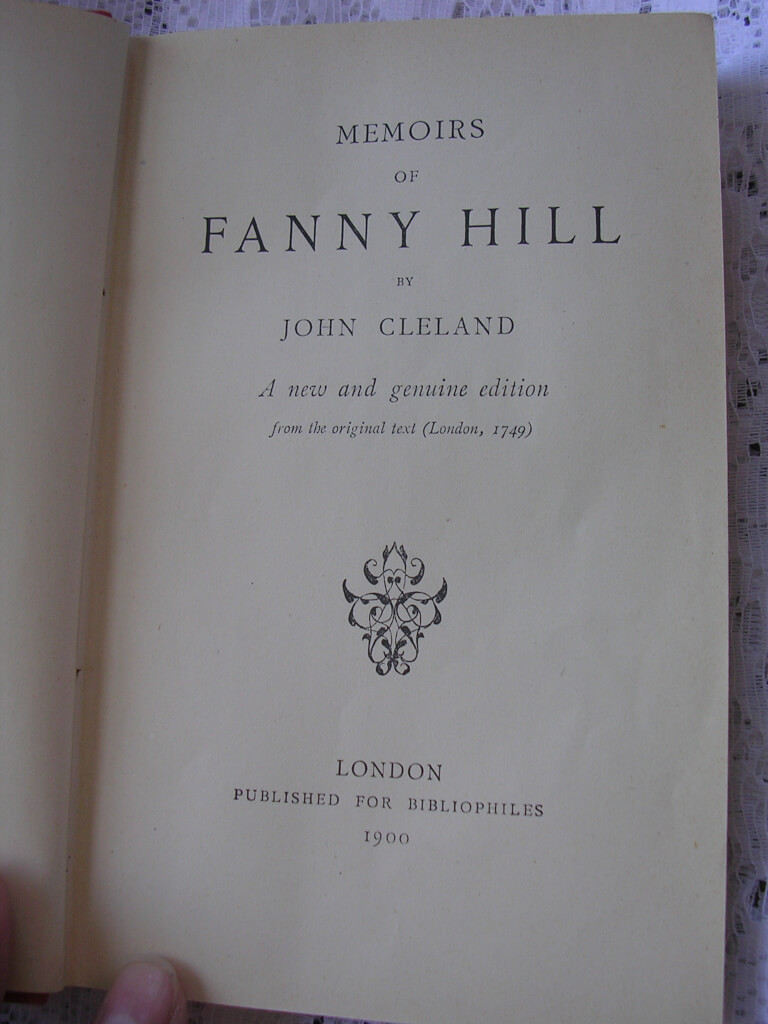
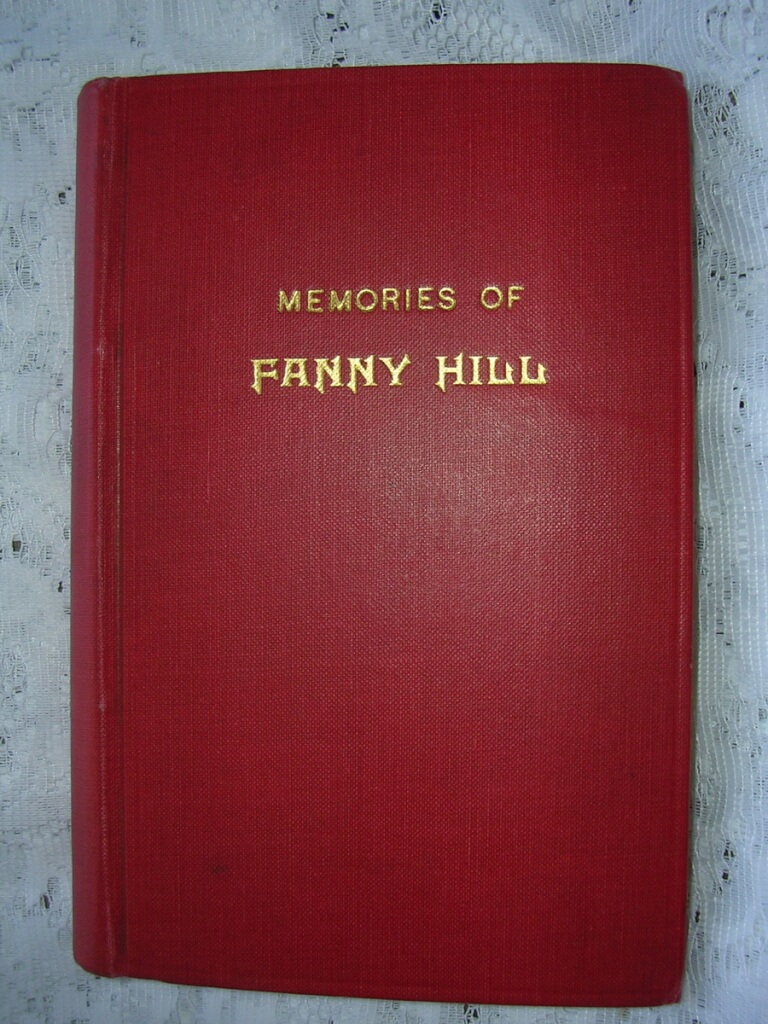 Memoirs of Fanny Hill [Memories of Fanny Hill], John Cleland (Published for Bibliophiles, London, 1900 [a facsimile copy, valid publishing date not known]) 7 1/4' X 4 3/4", 312pp, hardbound no DJ, red cloth boards with gilt lettering on front, nothing on spine, red stippled edges, very good condition, binding slightly cocked Written while the author was in debtor's prison in London and first published in 1749, Fanny Hill is considered the first original English prose pornography, and the first pornography to use the form of the novel. One of the most prosecuted and banned books in history, it has become a synonym for obscenity. I have not been able to find mention of this edition anywhere. It is an obvious reprint of a popular 1900 edition published by Charles Carrington. This book is unique in that it does not appear to be rebound yet the front cover reads "Memories of Fanny Hill" (Memories, not Memoires). Is this an attempt at a unique title, a mistake by the publisher/binder? I don't know.
Memoirs of Fanny Hill [Memories of Fanny Hill], John Cleland (Published for Bibliophiles, London, 1900 [a facsimile copy, valid publishing date not known]) 7 1/4' X 4 3/4", 312pp, hardbound no DJ, red cloth boards with gilt lettering on front, nothing on spine, red stippled edges, very good condition, binding slightly cocked Written while the author was in debtor's prison in London and first published in 1749, Fanny Hill is considered the first original English prose pornography, and the first pornography to use the form of the novel. One of the most prosecuted and banned books in history, it has become a synonym for obscenity. I have not been able to find mention of this edition anywhere. It is an obvious reprint of a popular 1900 edition published by Charles Carrington. This book is unique in that it does not appear to be rebound yet the front cover reads "Memories of Fanny Hill" (Memories, not Memoires). Is this an attempt at a unique title, a mistake by the publisher/binder? I don't know. -
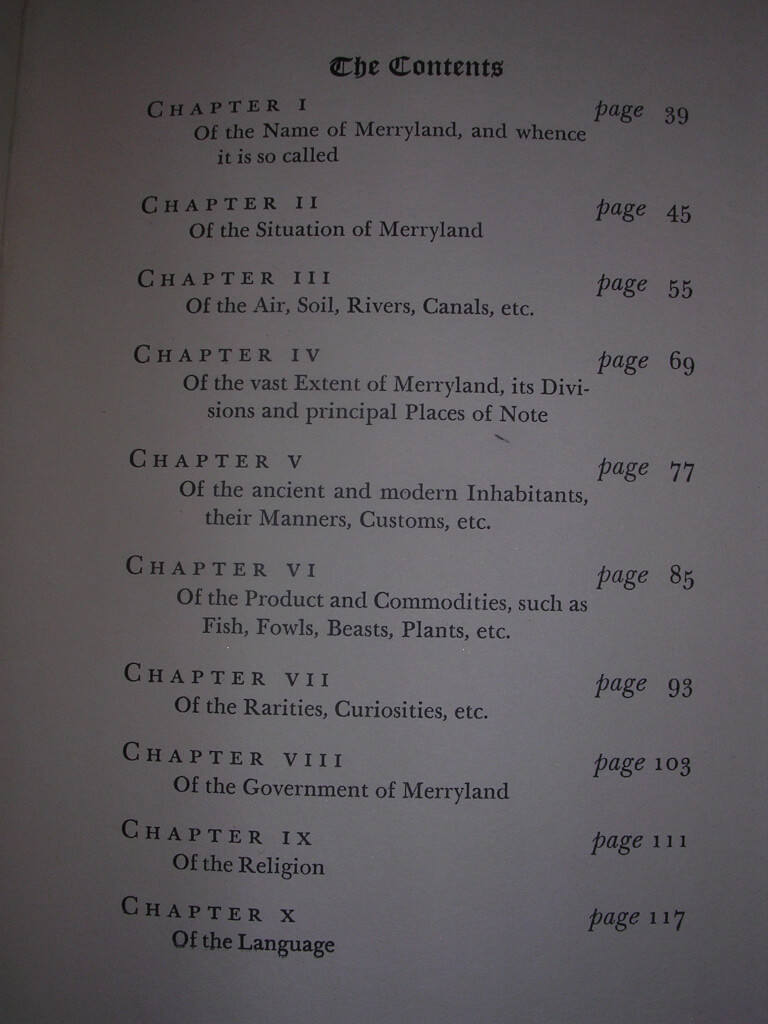
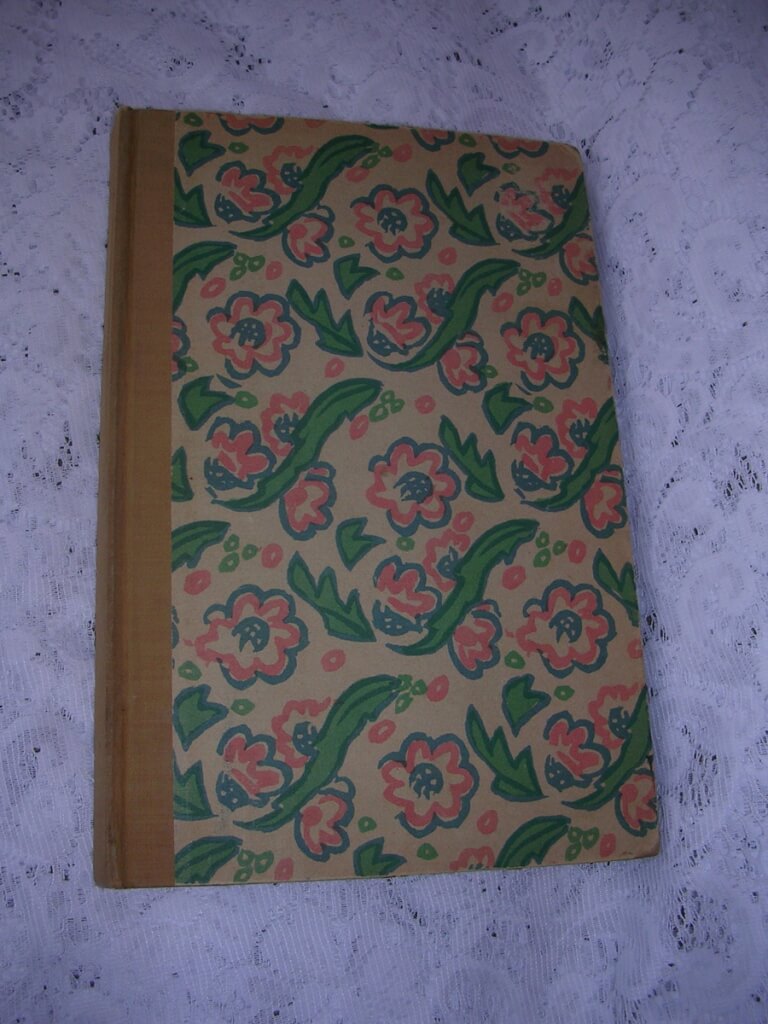 Merryland, Thomas Stretzer (Privately Issued, New York, Robin Hood House, 1932) 9 3/8" X 6 1/4", 136pp, hardbound no DJ, decorative paper boards with mylar protector, flower design, gilt lettering on spine, very good condition The Merryland books were a somewhat peculiar genre of English seventeenth and eighteenth century erotic fiction in which the female body was described in terms of a topographical metaphor derived from a pun on Maryland. Stretzer's book is typical of the genre in depicting the female body as a landscape that men explore, till, and plow. For example, he writes: "Her valleys are like Eden, her hills like Lebanon, she is a paradise of pleasure and a garden of delight."
Merryland, Thomas Stretzer (Privately Issued, New York, Robin Hood House, 1932) 9 3/8" X 6 1/4", 136pp, hardbound no DJ, decorative paper boards with mylar protector, flower design, gilt lettering on spine, very good condition The Merryland books were a somewhat peculiar genre of English seventeenth and eighteenth century erotic fiction in which the female body was described in terms of a topographical metaphor derived from a pun on Maryland. Stretzer's book is typical of the genre in depicting the female body as a landscape that men explore, till, and plow. For example, he writes: "Her valleys are like Eden, her hills like Lebanon, she is a paradise of pleasure and a garden of delight." -

 Merryland, Thomas Stretzer (Privately Issued, New York, Robin Hood House, 1932) 9 3/8" X 6 1/8", 136pp, hardbound no DJ, decorative paper boards, silver gilt lettering on spine, very good condition The Merryland books were a somewhat peculiar genre of English seventeenth and eighteenth century erotic fiction in which the female body was described in terms of a topographical metaphor derived from a pun on Maryland. Stretzer's book is typical of the genre in depicting the female body as a landscape that men explore, till, and plow. For example, he writes: "Her valleys are like Eden, her hills like Lebanon, she is a paradise of pleasure and a garden of delight."
Merryland, Thomas Stretzer (Privately Issued, New York, Robin Hood House, 1932) 9 3/8" X 6 1/8", 136pp, hardbound no DJ, decorative paper boards, silver gilt lettering on spine, very good condition The Merryland books were a somewhat peculiar genre of English seventeenth and eighteenth century erotic fiction in which the female body was described in terms of a topographical metaphor derived from a pun on Maryland. Stretzer's book is typical of the genre in depicting the female body as a landscape that men explore, till, and plow. For example, he writes: "Her valleys are like Eden, her hills like Lebanon, she is a paradise of pleasure and a garden of delight." -
 Metamorphoseon libri XV cum notis Th. Farnabii, P. Ovid Nasinis, (Paris, Pierre Esclassan, printed for Joan Blaeu, Amsterdam, 1763) 3.5″x5.75″, 380pp+2, full leather with gilt decorations, 5 raised bands,gilt titles on spine, marbled boards, very good condition for age, frontispiece presumably engraved by Joan Blaeu, some are fold-outs, text in Latin with numerous notes. Joan [Johannes] Blaeu (1596 - 1673) was a Dutch cartographer born in Alkmaar, the son of tne noted cartographer Willem Blaeu. Pierre Esclassan (1643?-1718) was a bookseller and printer. He was born in Garans, Toulouse, France and apprenticed with Claude Thiboust, eventually becoming a partner. He was imprisoned in 1674-75 for the printing and trade in prohibited books along with his brother and fellow printer Dominique Esclassan and accomplice Louis Prussurot. He was sentenced to a fine and a 9 banishment but then the same year pardoned by the court. He continued to work in association with Claude Thiboust and then 1694 Caude’s son, Claude-Louis Thiboust, until his death in 1718. Decorations on the front and back covers say "IESVS MARIA" which could possibly indicate that it is from Congrégation des Religeuses de Jésus-Marie (founded in 1815, in France by Claudina Thévenet) or possibly bound for Francisco de Jesus Maria Sarmento (1713-1790), (author, jurist, theologian) or someone from the Jesus Maria family originally from Coimbra, Portugal. More research would need to be done to determine the true meaning of the decoration. Ovid (Pūblius Ovidius Nāsō, 43BC – 17/18AD) was a Roman poet who lived during the reign of Augustus. He was a contemporary of the older Virgil and Horace, with whom he is often ranked as one of the three canonical poets of Latin literature. Although Ovid enjoyed enormous popularity during his lifetime, in 8AD the emperor Augustus banished him to a remote province on the Black Sea, where he remained until his death. The first major Roman poet to begin his career during the reign of Augustus, Ovid is today best known for the Metamorphoses, a 15-book continuous mythological narrative written in the meter of epic, and for works in elegiac couplets such as Ars Amatoria ("The Art of Love") and Fasti. His poetry was much imitated during Late Antiquity and the Middle Ages, and greatly influenced Western art and literature. The Metamorphoses remains one of the most important sources of classical mythology. The Metamorphoses (from Ancient Greek: μεταμορφώσεις: "Transformations") is an 8 AD Latin narrative poem by the Roman poet Ovid, considered his magnum opus. Comprising 11,995 lines, 15 books and over 250 myths, the Metamorphoses is comprehensive in its chronology, recounting the creation of the world to the death of Julius Caesar, which had occurred only a year before Ovid's birth; it has been compared to works of universal history, which became important in the 1st century BC. In spite of its apparently unbroken chronology, scholar Brooks Otis has identified four divisions in the narrative: Book I – Book II (end, line 875): The Divine Comedy Book III – Book VI, 400: The Avenging Gods Book VI, 401 – Book XI (end, line 795): The Pathos of Love Book XII – Book XV (end, line 879): Rome and the Deified Ruler Ovid works his way through his subject matter, often in an apparently arbitrary fashion, by jumping from one transformation tale to another, sometimes retelling what had come to be seen as central events in the world of Greek mythology and sometimes straying in odd directions. It begins with the ritual "invocation of the muse", and makes use of traditional epithets and circumlocutions. But instead of following and extolling the deeds of a human hero, it leaps from story to story with little connection. The recurring theme, as with nearly all of Ovid's work, is love—be it personal love or love personified in the figure of Amor (Cupid). Indeed, the other Roman gods are repeatedly perplexed, humiliated, and made ridiculous by Amor, an otherwise relatively minor god of the pantheon, who is the closest thing this putative mock-epic has to a hero. Apollo comes in for particular ridicule as Ovid shows how irrational love can confound the god out of reason. The work as a whole inverts the accepted order, elevating humans and human passions while making the gods and their desires and conquests objects of low humor. The Metamorphoses ends with an epilogue (Book XV.871–9), one of only two surviving Latin epics to do so. The ending acts as a declaration that everything except his poetry—even Rome—must give way to change: Now stands my task accomplished, such a work As not the wrath of Jove, nor fire nor sword Nor the devouring ages can destroy. One of the most influential works in Western culture, the Metamorphoses has inspired such authors as Dante Alighieri, Giovanni Boccaccio, Geoffrey Chaucer, and William Shakespeare. Numerous episodes from the poem have been depicted in acclaimed works of sculpture, painting, and music.
Metamorphoseon libri XV cum notis Th. Farnabii, P. Ovid Nasinis, (Paris, Pierre Esclassan, printed for Joan Blaeu, Amsterdam, 1763) 3.5″x5.75″, 380pp+2, full leather with gilt decorations, 5 raised bands,gilt titles on spine, marbled boards, very good condition for age, frontispiece presumably engraved by Joan Blaeu, some are fold-outs, text in Latin with numerous notes. Joan [Johannes] Blaeu (1596 - 1673) was a Dutch cartographer born in Alkmaar, the son of tne noted cartographer Willem Blaeu. Pierre Esclassan (1643?-1718) was a bookseller and printer. He was born in Garans, Toulouse, France and apprenticed with Claude Thiboust, eventually becoming a partner. He was imprisoned in 1674-75 for the printing and trade in prohibited books along with his brother and fellow printer Dominique Esclassan and accomplice Louis Prussurot. He was sentenced to a fine and a 9 banishment but then the same year pardoned by the court. He continued to work in association with Claude Thiboust and then 1694 Caude’s son, Claude-Louis Thiboust, until his death in 1718. Decorations on the front and back covers say "IESVS MARIA" which could possibly indicate that it is from Congrégation des Religeuses de Jésus-Marie (founded in 1815, in France by Claudina Thévenet) or possibly bound for Francisco de Jesus Maria Sarmento (1713-1790), (author, jurist, theologian) or someone from the Jesus Maria family originally from Coimbra, Portugal. More research would need to be done to determine the true meaning of the decoration. Ovid (Pūblius Ovidius Nāsō, 43BC – 17/18AD) was a Roman poet who lived during the reign of Augustus. He was a contemporary of the older Virgil and Horace, with whom he is often ranked as one of the three canonical poets of Latin literature. Although Ovid enjoyed enormous popularity during his lifetime, in 8AD the emperor Augustus banished him to a remote province on the Black Sea, where he remained until his death. The first major Roman poet to begin his career during the reign of Augustus, Ovid is today best known for the Metamorphoses, a 15-book continuous mythological narrative written in the meter of epic, and for works in elegiac couplets such as Ars Amatoria ("The Art of Love") and Fasti. His poetry was much imitated during Late Antiquity and the Middle Ages, and greatly influenced Western art and literature. The Metamorphoses remains one of the most important sources of classical mythology. The Metamorphoses (from Ancient Greek: μεταμορφώσεις: "Transformations") is an 8 AD Latin narrative poem by the Roman poet Ovid, considered his magnum opus. Comprising 11,995 lines, 15 books and over 250 myths, the Metamorphoses is comprehensive in its chronology, recounting the creation of the world to the death of Julius Caesar, which had occurred only a year before Ovid's birth; it has been compared to works of universal history, which became important in the 1st century BC. In spite of its apparently unbroken chronology, scholar Brooks Otis has identified four divisions in the narrative: Book I – Book II (end, line 875): The Divine Comedy Book III – Book VI, 400: The Avenging Gods Book VI, 401 – Book XI (end, line 795): The Pathos of Love Book XII – Book XV (end, line 879): Rome and the Deified Ruler Ovid works his way through his subject matter, often in an apparently arbitrary fashion, by jumping from one transformation tale to another, sometimes retelling what had come to be seen as central events in the world of Greek mythology and sometimes straying in odd directions. It begins with the ritual "invocation of the muse", and makes use of traditional epithets and circumlocutions. But instead of following and extolling the deeds of a human hero, it leaps from story to story with little connection. The recurring theme, as with nearly all of Ovid's work, is love—be it personal love or love personified in the figure of Amor (Cupid). Indeed, the other Roman gods are repeatedly perplexed, humiliated, and made ridiculous by Amor, an otherwise relatively minor god of the pantheon, who is the closest thing this putative mock-epic has to a hero. Apollo comes in for particular ridicule as Ovid shows how irrational love can confound the god out of reason. The work as a whole inverts the accepted order, elevating humans and human passions while making the gods and their desires and conquests objects of low humor. The Metamorphoses ends with an epilogue (Book XV.871–9), one of only two surviving Latin epics to do so. The ending acts as a declaration that everything except his poetry—even Rome—must give way to change: Now stands my task accomplished, such a work As not the wrath of Jove, nor fire nor sword Nor the devouring ages can destroy. One of the most influential works in Western culture, the Metamorphoses has inspired such authors as Dante Alighieri, Giovanni Boccaccio, Geoffrey Chaucer, and William Shakespeare. Numerous episodes from the poem have been depicted in acclaimed works of sculpture, painting, and music. -
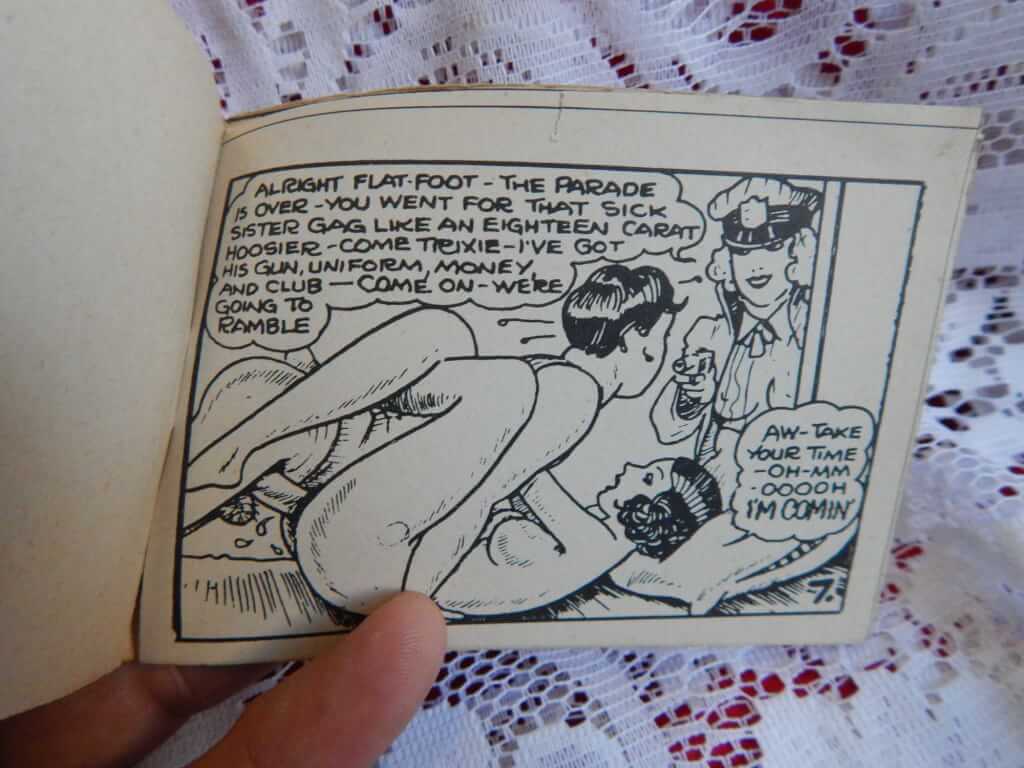
 Mickey Finn in "First Aid", (n.p. n.d.) 4.5" x 3", 8pp. pamphlet, stapled Tijuana bibles (also known as eight-pagers, bluesies, gray-backs, Jiggs-and-Maggie books, jo-jo books, Tillie-and-Mac books, and two-by-fours) were little pornographic comic books produced in the United States from the 1920s to the early 1960s.
Mickey Finn in "First Aid", (n.p. n.d.) 4.5" x 3", 8pp. pamphlet, stapled Tijuana bibles (also known as eight-pagers, bluesies, gray-backs, Jiggs-and-Maggie books, jo-jo books, Tillie-and-Mac books, and two-by-fours) were little pornographic comic books produced in the United States from the 1920s to the early 1960s. -

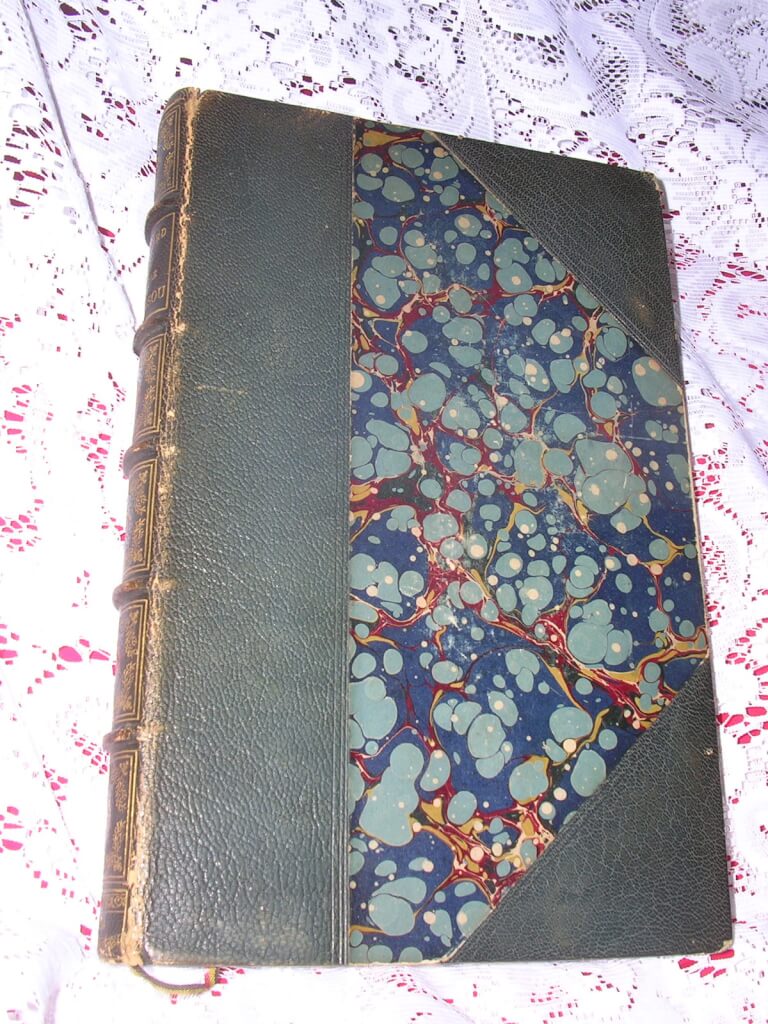 Mon Oncle Barbassou, Mario Uchard, illust. Paul Avril (J. Lemonnyer, Paris, 1884 [#394/1000, one of only 225 printed on Holland Paper]) 10" X 6.5", 311pp., hardbound in 3/4 dark blue morocco leather with gilt titles and decorations on spine with 5 raised bands, marbled endpapers, top edge gilt others deckled. First Illustrated Edition with many beautiful engravings by Paul Avril throughout. Some very slight wear to leather and boards, otherwise a very good+ copy overall clean, bright and structurally sound. #394/1000, one of only 275 in Holland Paper. Originally published in 4 parts in 1876, My Uncle Barbassou is a story of a man who inherits his uncle's estate which includes a newly purchased harem of 3 young girls. This novel is a prime example of the French "Orientalists" of the late 1800's. Scandalous for the age, but mild by today's standards, this book is in the original french. This is a beautifully bound copy of the First Illustrated Edition with plates by Paul Avril. Édouard-Henri Avril (1849-1928) used the pseudonym "Paul Avril" for his erotic work. He was a French painter and commercial artist. His career saw collaboration with influential people like Octave Uzanne, Henry Spencer Ashbee and Friedrich Karl Forberg. He is one of the most celebrated erotic artists of his age. Avril was a soldier before starting his career in art. He was awarded with the Legion of Honour for his actions in the Franco-Prussian War.
Mon Oncle Barbassou, Mario Uchard, illust. Paul Avril (J. Lemonnyer, Paris, 1884 [#394/1000, one of only 225 printed on Holland Paper]) 10" X 6.5", 311pp., hardbound in 3/4 dark blue morocco leather with gilt titles and decorations on spine with 5 raised bands, marbled endpapers, top edge gilt others deckled. First Illustrated Edition with many beautiful engravings by Paul Avril throughout. Some very slight wear to leather and boards, otherwise a very good+ copy overall clean, bright and structurally sound. #394/1000, one of only 275 in Holland Paper. Originally published in 4 parts in 1876, My Uncle Barbassou is a story of a man who inherits his uncle's estate which includes a newly purchased harem of 3 young girls. This novel is a prime example of the French "Orientalists" of the late 1800's. Scandalous for the age, but mild by today's standards, this book is in the original french. This is a beautifully bound copy of the First Illustrated Edition with plates by Paul Avril. Édouard-Henri Avril (1849-1928) used the pseudonym "Paul Avril" for his erotic work. He was a French painter and commercial artist. His career saw collaboration with influential people like Octave Uzanne, Henry Spencer Ashbee and Friedrich Karl Forberg. He is one of the most celebrated erotic artists of his age. Avril was a soldier before starting his career in art. He was awarded with the Legion of Honour for his actions in the Franco-Prussian War. -
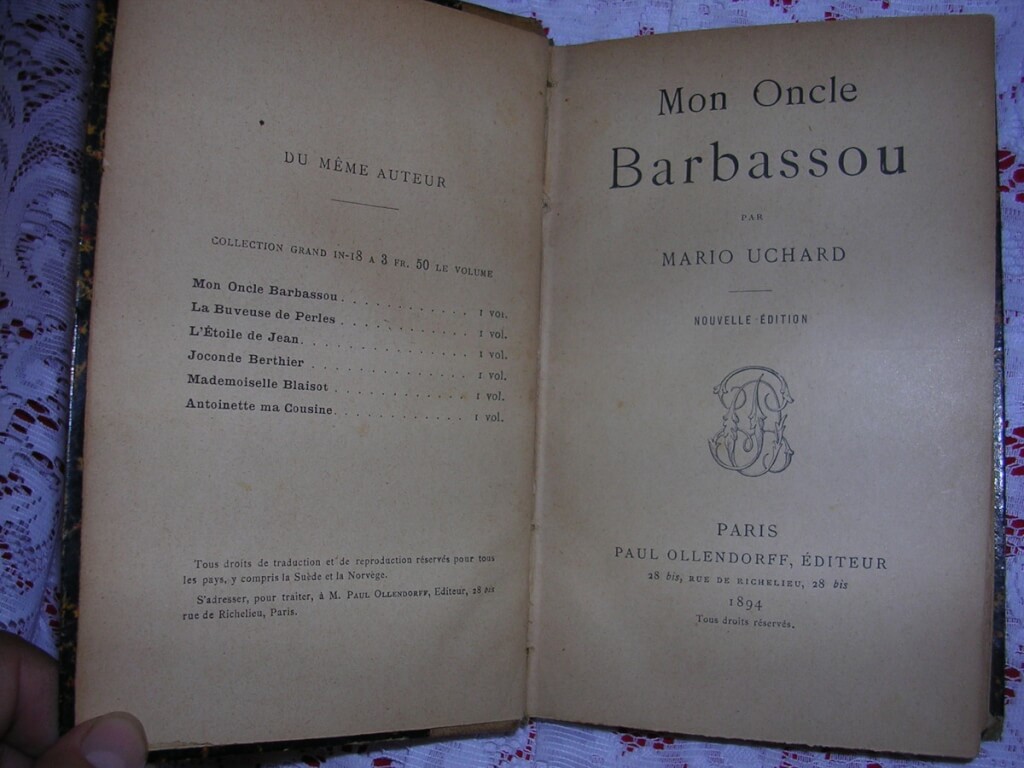
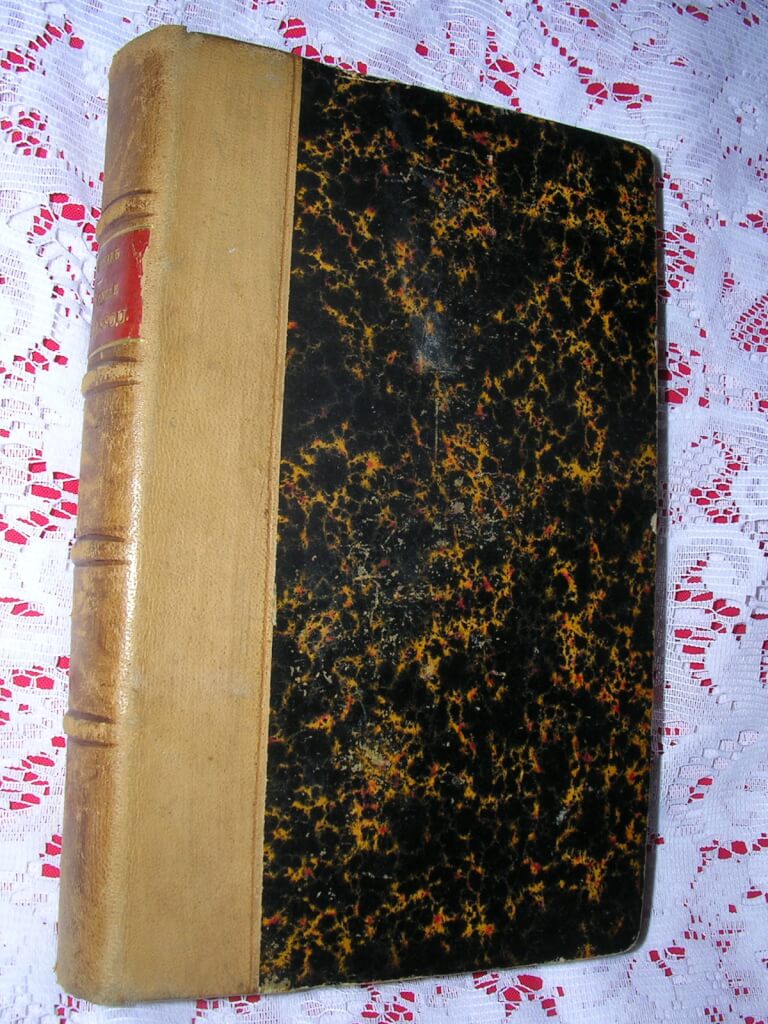 Mon Oncle Barbassou, Mario Uchard (Paul Ollendorff, ƒditeur, Paris, 1894, stated "Nouvelle Edition") 7.25" x 4.75", 405pp., hardbound, quarter leather, 4 raised bands on spine, title in gilt on red. Good condition for age, pages yellowing. Originally published in 4 parts in 1876, "Mon Oncle Barbassou" is a story of a man who inherits his uncle's estate which includes a newly purchased harem of 3 young girls. This novel is a prime example of the French "Orientalists" of the late 1800's. Scandalous for the age, but mild by today's standards, this book is in the original french.
Mon Oncle Barbassou, Mario Uchard (Paul Ollendorff, ƒditeur, Paris, 1894, stated "Nouvelle Edition") 7.25" x 4.75", 405pp., hardbound, quarter leather, 4 raised bands on spine, title in gilt on red. Good condition for age, pages yellowing. Originally published in 4 parts in 1876, "Mon Oncle Barbassou" is a story of a man who inherits his uncle's estate which includes a newly purchased harem of 3 young girls. This novel is a prime example of the French "Orientalists" of the late 1800's. Scandalous for the age, but mild by today's standards, this book is in the original french. -
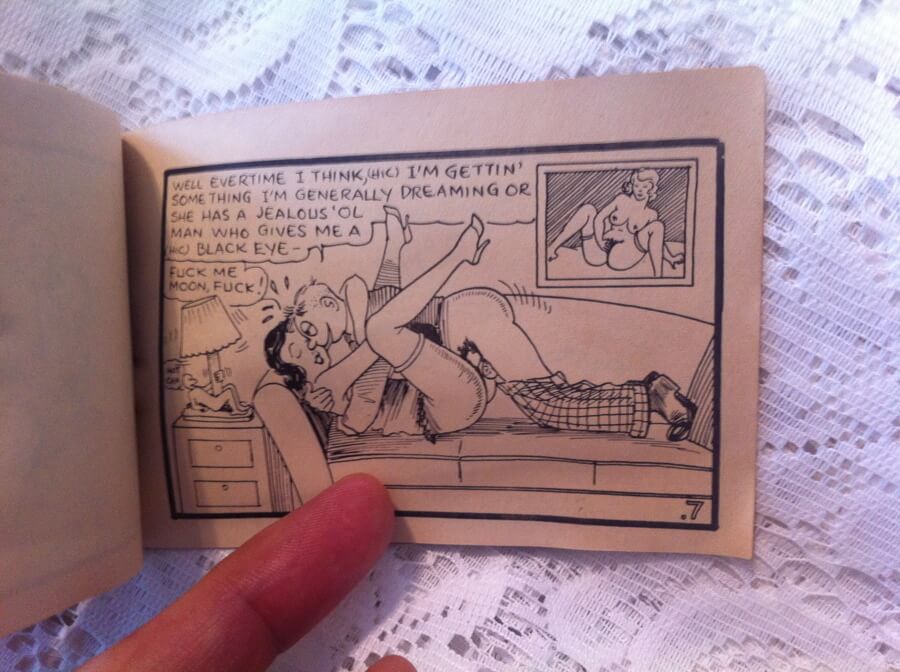
 Moon Mullins, (n.p. n.d.) 4.5" x 3", 8pp. pamphlet, stapled Tijuana bibles (also known as eight-pagers, bluesies, gray-backs, Jiggs-and-Maggie books, jo-jo books, Tillie-and-Mac books, and two-by-fours) were little pornographic comic books produced in the United States from the 1920s to the early 1960s. Their popularity peaked during the Great Depression era. This book parodies Moon Mullens, a long running comic strip from 1923 - 1991.
Moon Mullins, (n.p. n.d.) 4.5" x 3", 8pp. pamphlet, stapled Tijuana bibles (also known as eight-pagers, bluesies, gray-backs, Jiggs-and-Maggie books, jo-jo books, Tillie-and-Mac books, and two-by-fours) were little pornographic comic books produced in the United States from the 1920s to the early 1960s. Their popularity peaked during the Great Depression era. This book parodies Moon Mullens, a long running comic strip from 1923 - 1991. -

 Moon Mullins in "Treat 'em with Kindness", (n.p. n.d.) 4.5" x 3", 8pp. pamphlet, stapled Tijuana bibles (also known as eight-pagers, bluesies, gray-backs, Jiggs-and-Maggie books, jo-jo books, Tillie-and-Mac books, and two-by-fours) were little pornographic comic books produced in the United States from the 1920s to the early 1960s.
Moon Mullins in "Treat 'em with Kindness", (n.p. n.d.) 4.5" x 3", 8pp. pamphlet, stapled Tijuana bibles (also known as eight-pagers, bluesies, gray-backs, Jiggs-and-Maggie books, jo-jo books, Tillie-and-Mac books, and two-by-fours) were little pornographic comic books produced in the United States from the 1920s to the early 1960s. -
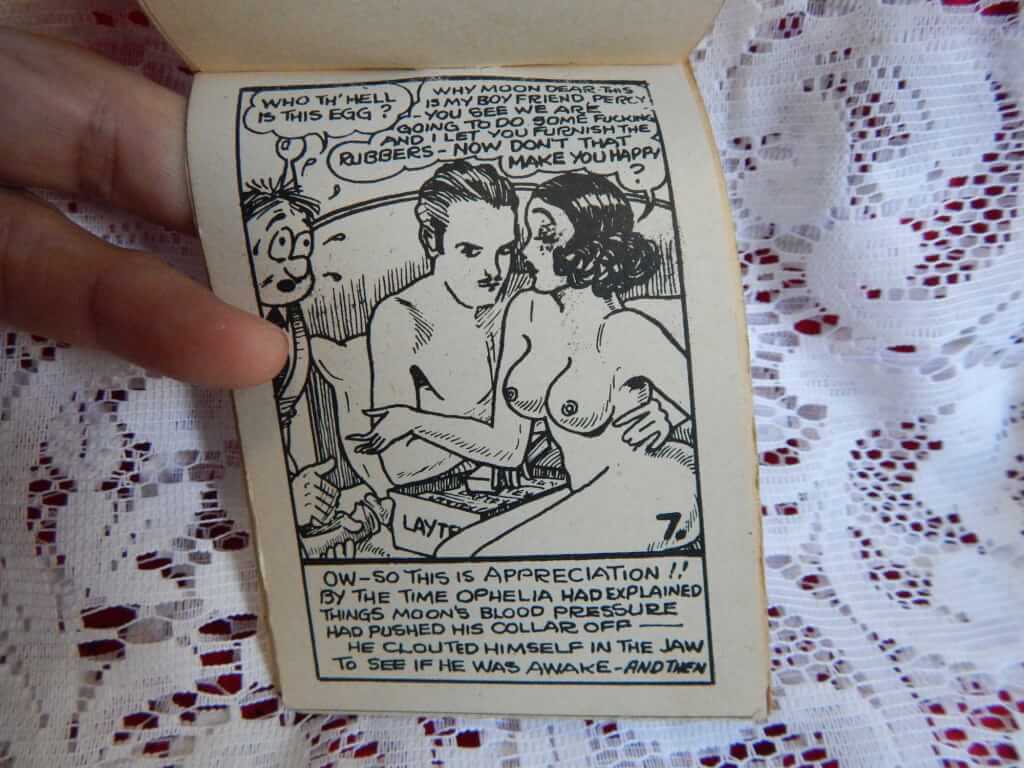
 Moon Mullins in "Treat 'em with Kindness", (n.p. n.d.) 4.5" x 3", 8pp. pamphlet, stapled Tijuana bibles (also known as eight-pagers, bluesies, gray-backs, Jiggs-and-Maggie books, jo-jo books, Tillie-and-Mac books, and two-by-fours) were little pornographic comic books produced in the United States from the 1920s to the early 1960s.
Moon Mullins in "Treat 'em with Kindness", (n.p. n.d.) 4.5" x 3", 8pp. pamphlet, stapled Tijuana bibles (also known as eight-pagers, bluesies, gray-backs, Jiggs-and-Maggie books, jo-jo books, Tillie-and-Mac books, and two-by-fours) were little pornographic comic books produced in the United States from the 1920s to the early 1960s. -
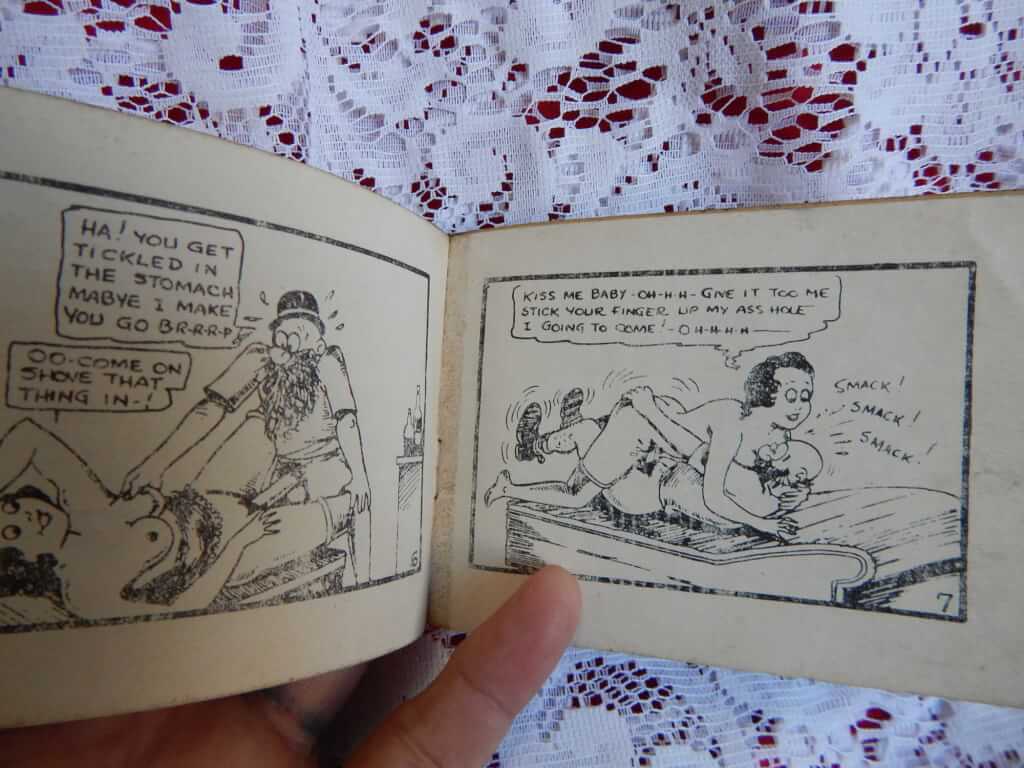
 Mr. Geezil, the "Shoe Cobbler", (np. nd.) 4.5" x 3", 8pp., pamphlet, stapled and taped Tijuana bibles (also known as eight-pagers, bluesies, gray-backs, Jiggs-and-Maggie books, jo-jo books, Tillie-and-Mac books, and two-by-fours) were little pornographic comic books produced in the United States from the 1920s to the early 1960s.
Mr. Geezil, the "Shoe Cobbler", (np. nd.) 4.5" x 3", 8pp., pamphlet, stapled and taped Tijuana bibles (also known as eight-pagers, bluesies, gray-backs, Jiggs-and-Maggie books, jo-jo books, Tillie-and-Mac books, and two-by-fours) were little pornographic comic books produced in the United States from the 1920s to the early 1960s. -
 Musée Royal de Naples. Peintures, bronzes et statues érotiques du Cabinet Secret, avec leur explication par M. C. F., contenant soixante gravures. (Au cercle du livre précieux, Paris, 1959, #209/2500) 12.25" X 9.25", xxx-152pp, loosely contained by paper wraps in a blue slipcase, good condition, some fading, bumping and peeling to slipcase, interior pages are mint condition. This is a republishing of the 1836 portfolio of the "secret cabinet" erotic works of the Museum of Naples. It was published privately for circulation among member of "Au cercle du livre précieux" [circle of the precious book] to avoid prosecution for indecency. There are full-page descriptions of the works and then 60 illustrations on coral colored paper. The pages are unbound and contained in a slipcase.
Musée Royal de Naples. Peintures, bronzes et statues érotiques du Cabinet Secret, avec leur explication par M. C. F., contenant soixante gravures. (Au cercle du livre précieux, Paris, 1959, #209/2500) 12.25" X 9.25", xxx-152pp, loosely contained by paper wraps in a blue slipcase, good condition, some fading, bumping and peeling to slipcase, interior pages are mint condition. This is a republishing of the 1836 portfolio of the "secret cabinet" erotic works of the Museum of Naples. It was published privately for circulation among member of "Au cercle du livre précieux" [circle of the precious book] to avoid prosecution for indecency. There are full-page descriptions of the works and then 60 illustrations on coral colored paper. The pages are unbound and contained in a slipcase.


